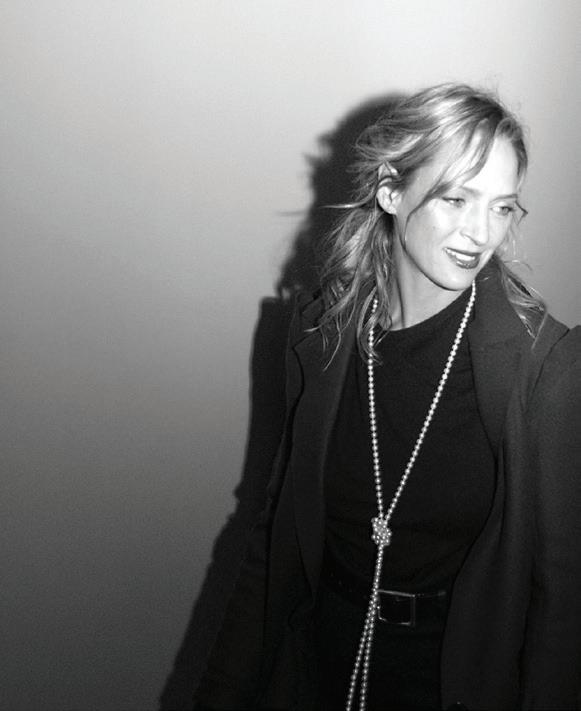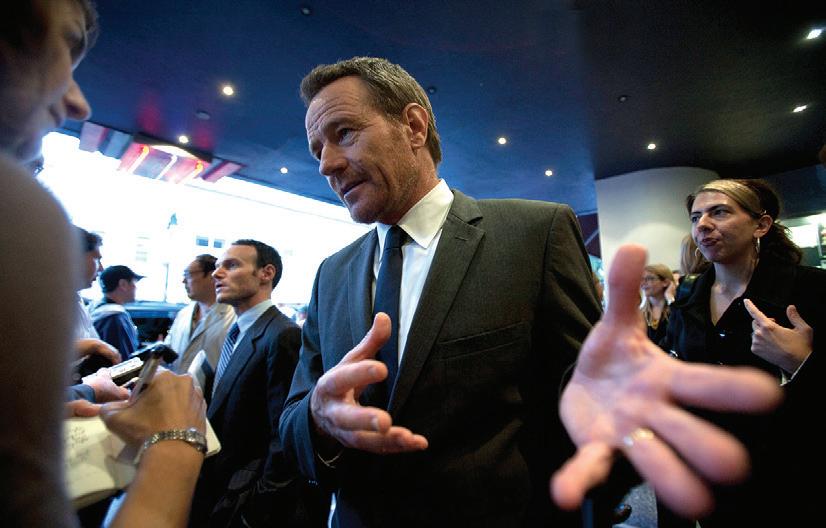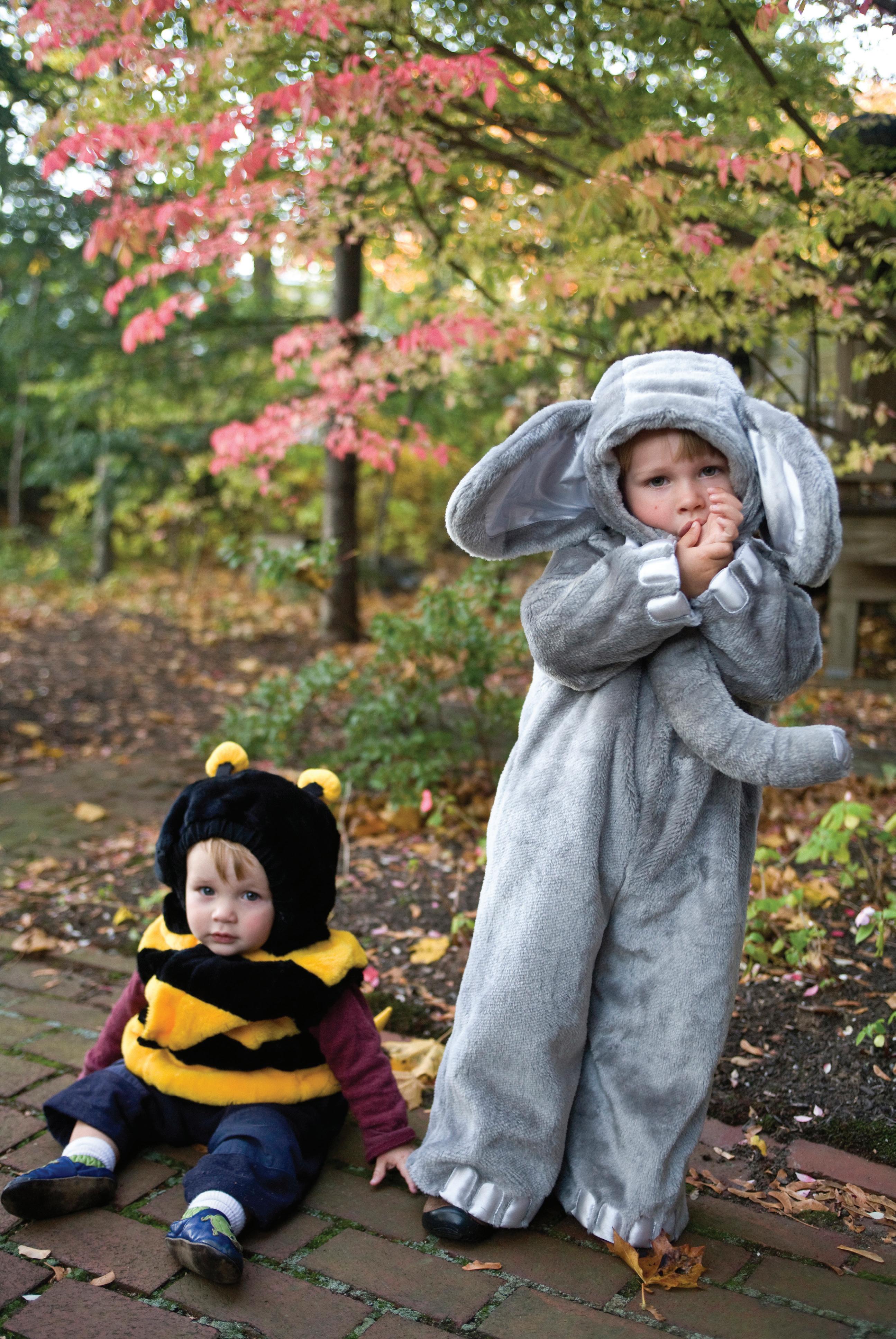Marin Magazine’s Ultimate Guide to the 38th



Marin Magazine’s Ultimate Guide to the 38th


Some moments are worth remembering







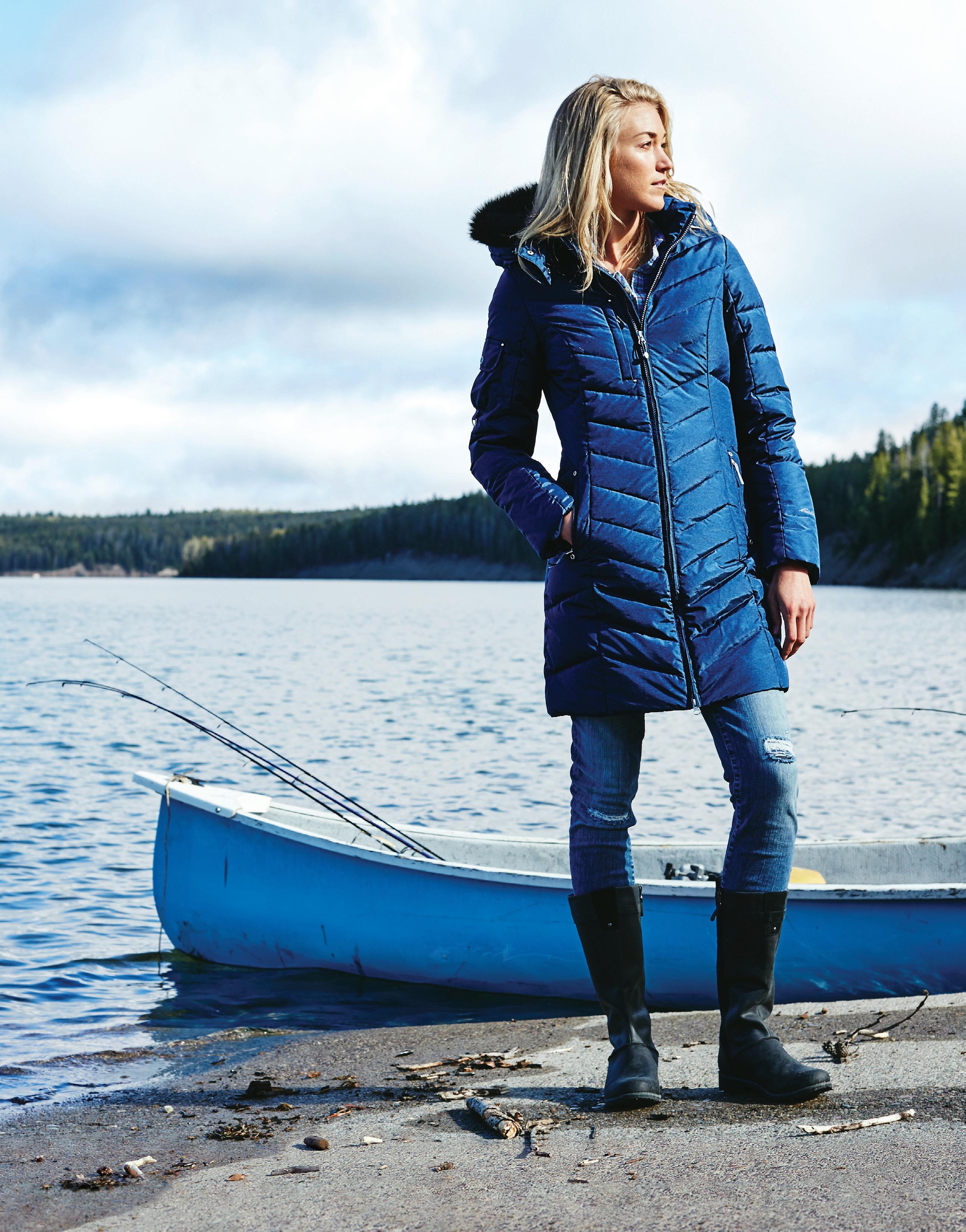

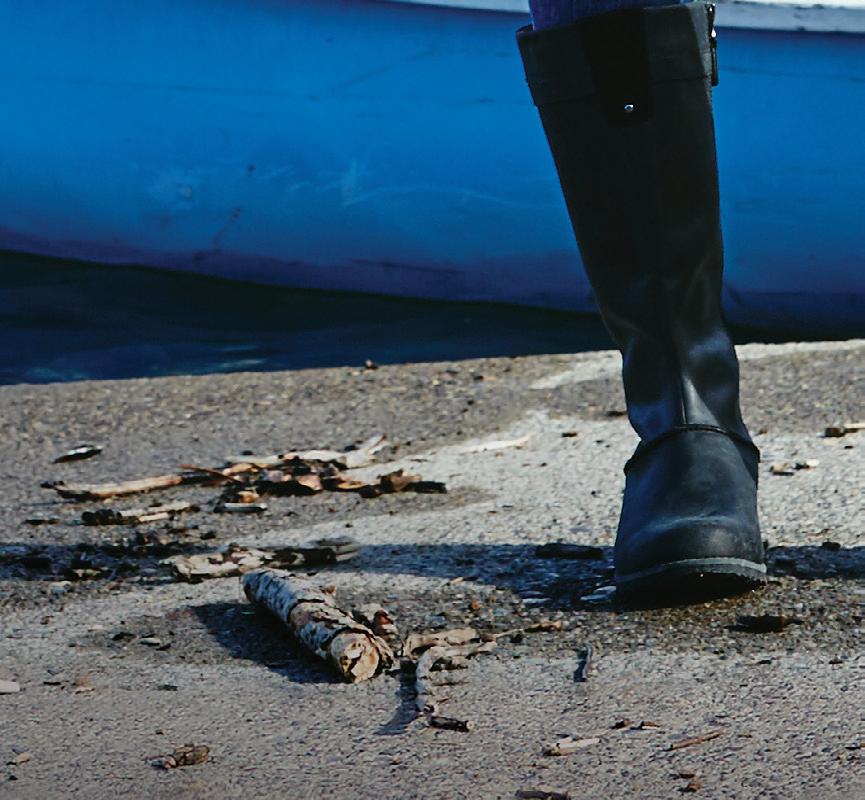



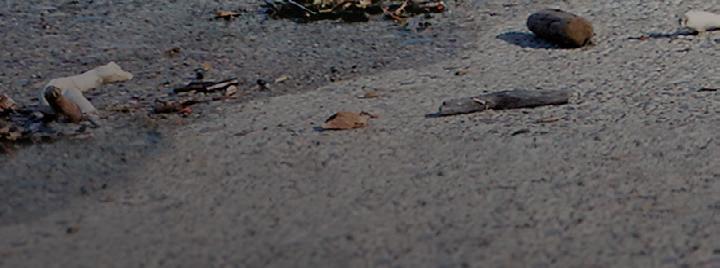



We are truly honored once again to partner with the California Film Institute and the Mill Valley Film Festival to produce our second MVFF guide. In these 48 pages you’ll learn more about the 38th edition of the venerable festival, meet some of the key players and participating filmmakers, and get a look at Marin’s own moviemaking history. This year we reveal more about Salomy Jane, the 1914 classic that was shot right here in Marin, and get an up-close look at personalities with local connections who helped shape the film industry, including George Lucas and Tippi Hedren. We’ve also got a map of key Marin locations used in classic films, a look at MVFF event highlights and, of course, the entire film schedule for 2015. So flip through the guide as you take your seat and, most of all, enjoy the show. — MARIN MAGAZINE STAFF EDITORS
ULTIMATE GUIDE TO THE 38TH MILL VALLEY FILM FESTIVAL
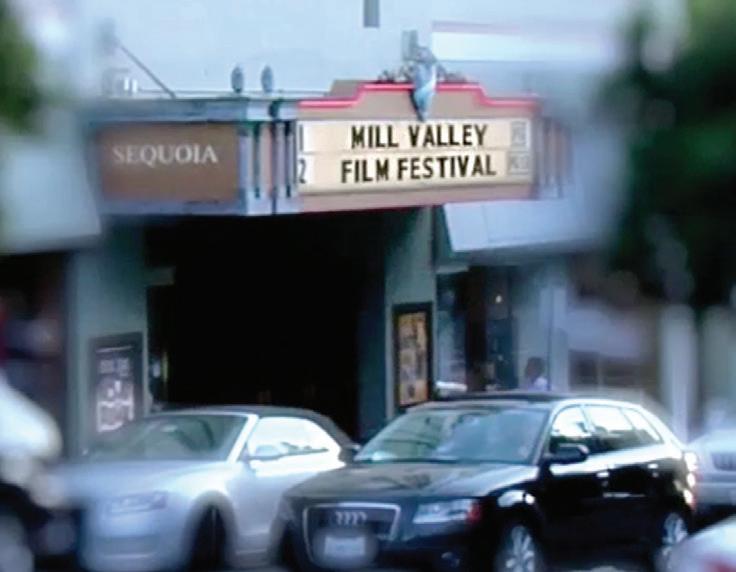
PUBLISHER / EDITORIAL DIRECTOR
Nikki Wood
Editorial
EXECUTIVE EDITOR
Mimi Towle
MANAGING EDITOR
Daniel Jewett
FASHION EDITOR
Veronica Sooley
EDITORIAL ASSISTANT
Kasia Pawlowska
COPY EDITOR
Cynthia Rubin
CONTRIBUTING WRITERS
Peter Crooks , Laurel McCaull, Calin Van Paris, Jan Wahl
Art
DESIGNER
Kate Godfrey
ILLUSTRATOR
Dave Urban
PRODUCTION MANAGER
Alex French
Advertising
ASSOCIATE PUBLISHER
Debra Hershon
ADVERTISING DIRECTOR
Michele Geoffrion Johnson
SENIOR ACCOUNT MANAGERS
Leah Bronson
Lesley Cesare
ACCOUNT MANAGER
Dana Horner
ADVERTISING ART DIRECTOR
Alex French
8 CONTRIBUTORS The

Administration/Web
DIGITAL CONTENT EDITOR
Leigh Walker
OFFICE MANAGER
Kirstie A. Martinelli
One Harbor Drive, Suite 208 Sausalito, CA 94965
MARINMAGAZINE.COM
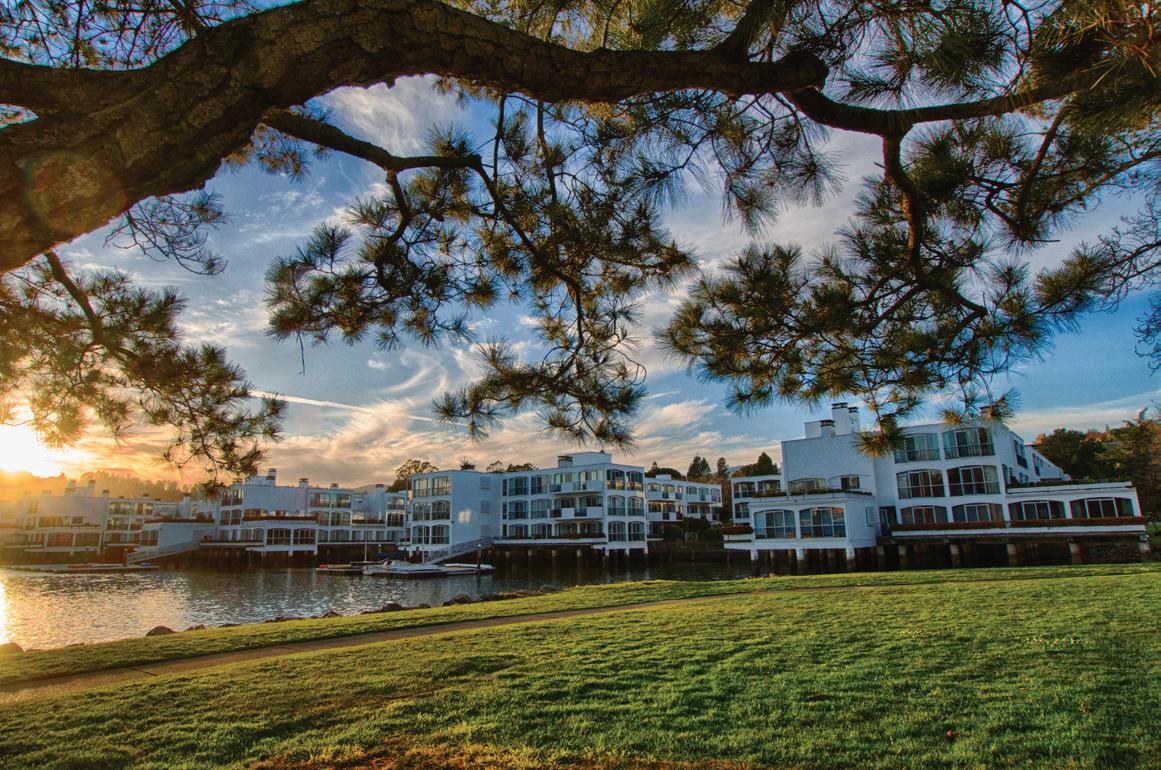
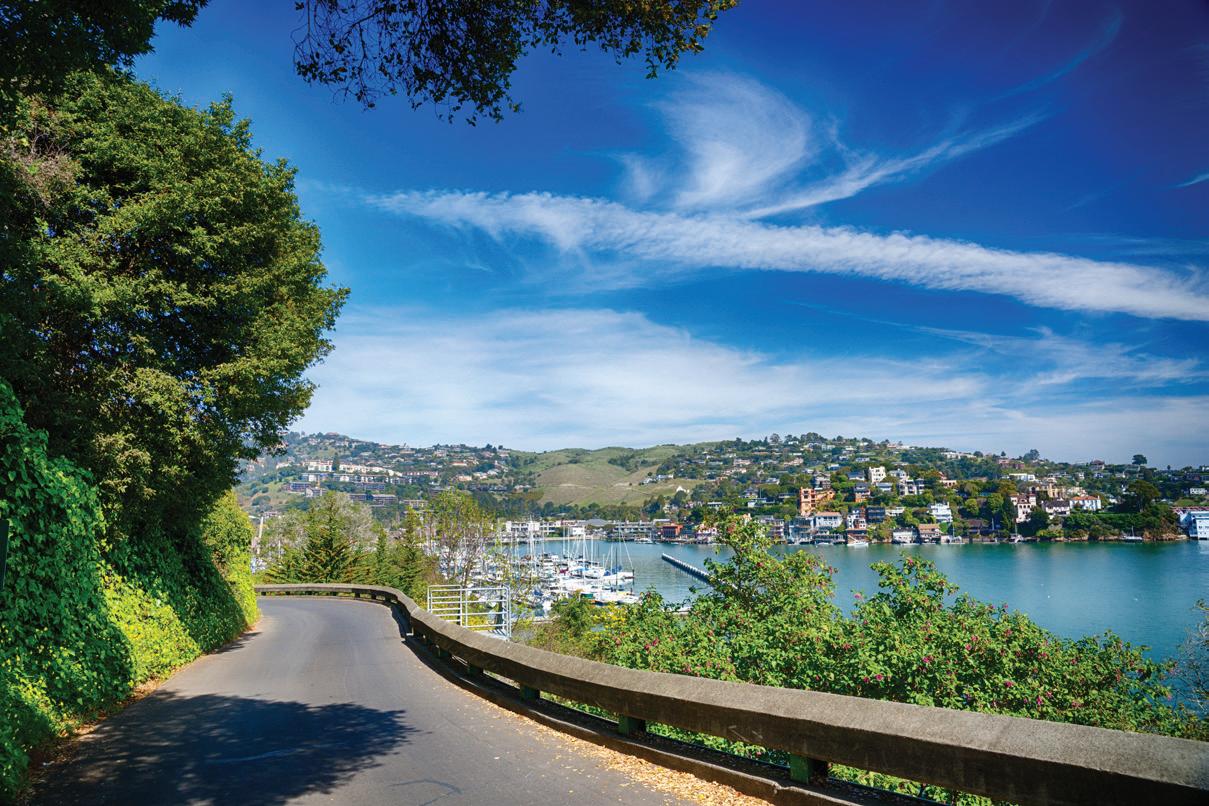




Jan Wahl is a lifelong movie buff as well as a producer, director, TV and radio broadcaster, and showbiz historian. She has won two Emmy Awards, is a longtime active member of the Directors Guild of America and reviews movies for KCBS All News Radio and KRON-TV. Wahl gives film lectures on international cruises and throughout the Bay Area and teaches classes on critical thinking about mass media as well as Hollywood history. She lives in Marin with her husband and two dogs, Duke and Ella. For more information, go to janwahl.com.
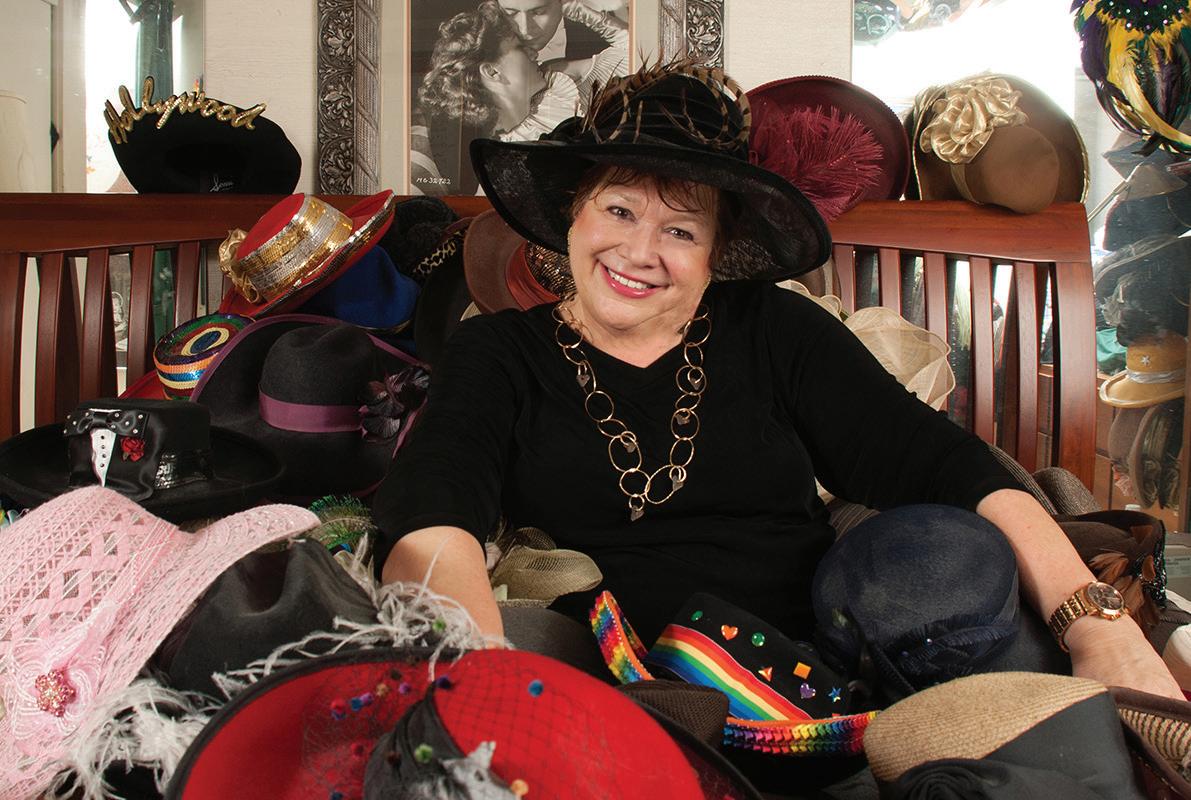
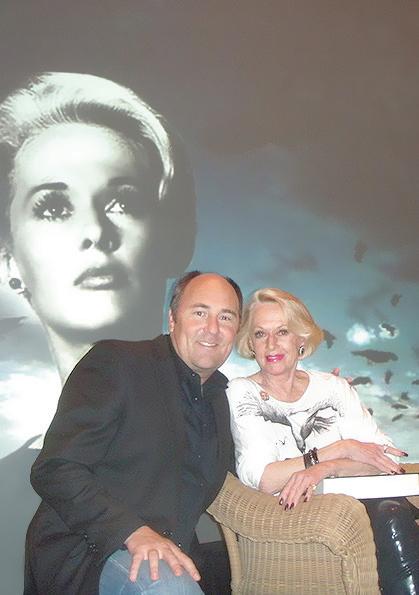
In addition to being the senior writer/editor for Diablo Magazine, Crooks has written stories for the Arizona Daily Sun, Via magazine, Athletics magazine and theowlmag. com and appeared as an expert tipster on the television programs Bay Area Backroads and Eye on the Bay. A big time film buff, he writes a movie blog (Pete’s Popcorn Picks) that can be found at diablomag.com and has contributed weekly reviews to radio programs on KFRC, KNBR and 107.7 The Bone. Crooks spent most of the ’90s as a scubadiving, movie-watching, library-frequenting vagabond, living in Micronesia, Australia and Grand Canyon National Park. His book The Setup: A True Story of Dirty Cops, Soccer Moms, and Reality TV was published in January. You can follow him on twitter @popcornpicks.
With more than 30 years’ experience putting his unique visual twist on subjects ranging from handmade Hawaiian candy to hip replacement exercises, Urban distills the essence of any subject and presents it in a universally appealing style. He has provided editorial, instructional and educational illustrations for a wide variety of applications from health care to high tech, entertainment to construction, publishing to parenting. Some of his noteworthy clients include Warner Bros., Price Waterhouse Coopers, Merck, American Cancer Society, Chicago Tribune, Forbes and Universe/Rizzoli, to name a few. You can find more of his work at daveurbanart.com.

Zoë Elton has been helping to mold MVFF since its 1977 founding, amassing and screening films to fill first a modest three-day run and now a full-fledged, 11-day spectacle. She’s also partial to the Berlin International Film Festival, a February event when the weather is cold enough to entice people into the comfort of a warm screening room.
Unlike the MVFF, Berlin is a competitive festival, with prizes Elton says reflect its unique sensibilities: smart, artistically risky and political. This year “the top prize, the Golden Bear, went to Iranian director Jafar Panahi for his film Taxi,” she notes. “Since 2010, Panahi has been banned [in his country] from filmmaking: this film was made digitally and spirited across borders to Berlin. His prize was accepted by his young niece, Hana Saeidi. An amazing moment: you can put an artist under house arrest, but you can’t dampen the creative spirit.” March found Elton at the Guadalajara International Film Festival taking in a whirlwind of talent from Mexico, Latin America and Spain. But it’s MVFF 2015 she’s most enthusiastic about: “I do think this is an extraordinary year for MVFF. Our women’s initiative, Mind the Gap, has brought an increased depth of discus sion about film, filmmakers and story that has enriched our process across the board. Overall, I’m very excited about our lineup this year,” she says. “I don’t usually allow my cautious English self to say that.”

 BY
BY
Variety once said the Mill Valley Film Festival has “the ambience of a destination festival and the clout of an urban one.”

California Film Institute and MVFF founder Mark Fishkin wholeheartedly agrees, and his opinion can certainly be trusted, as those who host film festivals also attend them. Fishkin has been going to the Sundance Film Festival in Salt Lake City, Utah, since its inception in 1978 and likens that annual event, held every January, to an alternative Hollywood universe with cold and snow. “Sundance is a great place to mingle with industry from all avenues: actors, filmmakers, publicists and studio heads,” he says. “It’s literally the largest gathering of the independent film industry.” A few Sundance films usually end up showing at MVFF, he notes. Another favorite gathering is Cannes (aka the Cannes Film Festival or Festival de Cannes) on the French Riviera in mid-May, which for him has become an essential pre-MVFF excursion over the last 25 years.
“There’s no slowing down in Cannes,” Fishkin says. “You might get to bed at 1 or 2 a.m. and then have to get up early to make an 8 a.m. screening. It’s exhausting, but when you pause and look around at the yachts, the ocean and the beautiful scenery, you think, ‘This isn’t so bad!’ ” Yet Fishkin sees much relevance and success in our smaller, unique Marin-based event. “We remain a filmmakers’ festival, bringing the finest films from around the world while remaining grounded in our community,” he says.
MVFF’s Mark Fishkin and Zoë Elton recount their travels in search of the next great film.
CALIN VAN PARIS
“We remain a filmmakers’ festival, bringing the finest films from around the world while remaining grounded in our community.”
Onl y Celebrity brings you more than 450 wine selections (and a two-story, glass wine tower to display them) complete with one of the largest teams of sommeliers at sea, who’ll always provide perfect pairings with our globally inspired cuisines.


With so many vintages and up to 12 distinctive restaurants to enjoy them, no matter where in the world you go, chances are your favorites will be ours.
That’s

modern luxury.SM
Fairfax filmmaker James Redford is presenting his sixth documentary, Paper Tigers, during this year’s Mill Valley Film Festival. The film focuses on the positive effects of an unconventional teaching method at Seattle’s Lincoln High School that resulted in 75 percent fewer student fights and three times as many college-bound graduates.
How did you decide to focus on the students at Lincoln?
Sadly, kids who have grown up exposed to chronic and traumatic stress often suffer neurological and physiological consequences that make it harder to learn. The teachers and administrators at Lincoln High School designed an educational approach that took that into account. Within three years, GPA, attendance and graduation rates were up, while fights, suspensions and arrests were down. That seemed like a story worth telling.
What brought you to this topic?
My partner at KPJR films, Karen Pritzker, sent me the Adverse Childhood Experiences Study. This landmark study proved beyond a doubt that chronic and traumatic stress, if left untreated, dramatically increases the odds of poor health outcomes later in life. It was a real head-smacker.
As a parent, did you learn anything new about teenagers?
If you honor the adult in them, often the child is dying to come out.
You gave the cameras to the students to film themselves. Why?
I had a talented and thoughtful production crew (local husband-and-wife team Tylor and Shannon Norwood) camped at Lincoln for days on end, but many of the kids remained elusive. Knowing how media savvy kids are these days, I invited them to tell their story with me. They all embraced it, some quite artfully. Giving them some control and authorship really made the film what it is.
Did you expect this positive outcome?
Lincoln’s success metrics were off the charts, so I figured we would be witnessing “best practices” in action. But it was

not all unicorns and rainbows. The kids had, and continue to have, their ups and downs. But they have the skills to thrive, and most of them credit Lincoln High School for a big part of that.
How many times did you visit the school during the filmmaking process?
Oh Lord. I lost track. But I was finishing HBO’S Toxic Hot Seat at the time, so fewer times than the crew, that’s for sure. They were real troupers.
What is the take-home for teachers and educators dealing with children with disruptive behavior issues?
Being trauma-informed helps teachers and educators as well as kids. To reject someone who is making your life difficult — that is so understandable. But if you know there is a good chance that the problematic behavior has roots in neurological or physiological changes, it might make the behavior feel less personal. It might make you a bit more sympathetic.

What does it mean for you to be in the Mill Valley Film Festival?
Film festivals are a dime a dozen these days, but the Mill Valley Film Festival is one of the oldest and most well-attended and well-run film festivals in the USA. The California Film Institute has its act together. Trust me on that one. It can get pretty ugly out there on the circuit.
What’s next?
I just completed a follow-up film to Paper Tigers called Resilience, a one-hour look at the science of stress and how to undo the damage. I also just finished my last day of shooting on an HBO film titled Happening, a fresh and inspiring look at the dawn of the clean energy era. It’s my first time in front of the camera. Now I know why I waited so long.
The Fairfax filmmaker is back at this year’s festival with a look at an alternative teaching method that is having a lot of success.
BY MIMI TOWLE
McGuire Real Estate is a local, luxury boutique that focuses on the San Francisco Bay Area’s high-end niche markets. As a well-respected member of the brokerage community, McGuire’s clients benefit from our established relationships throughout San Francisco Bay Area and the world.
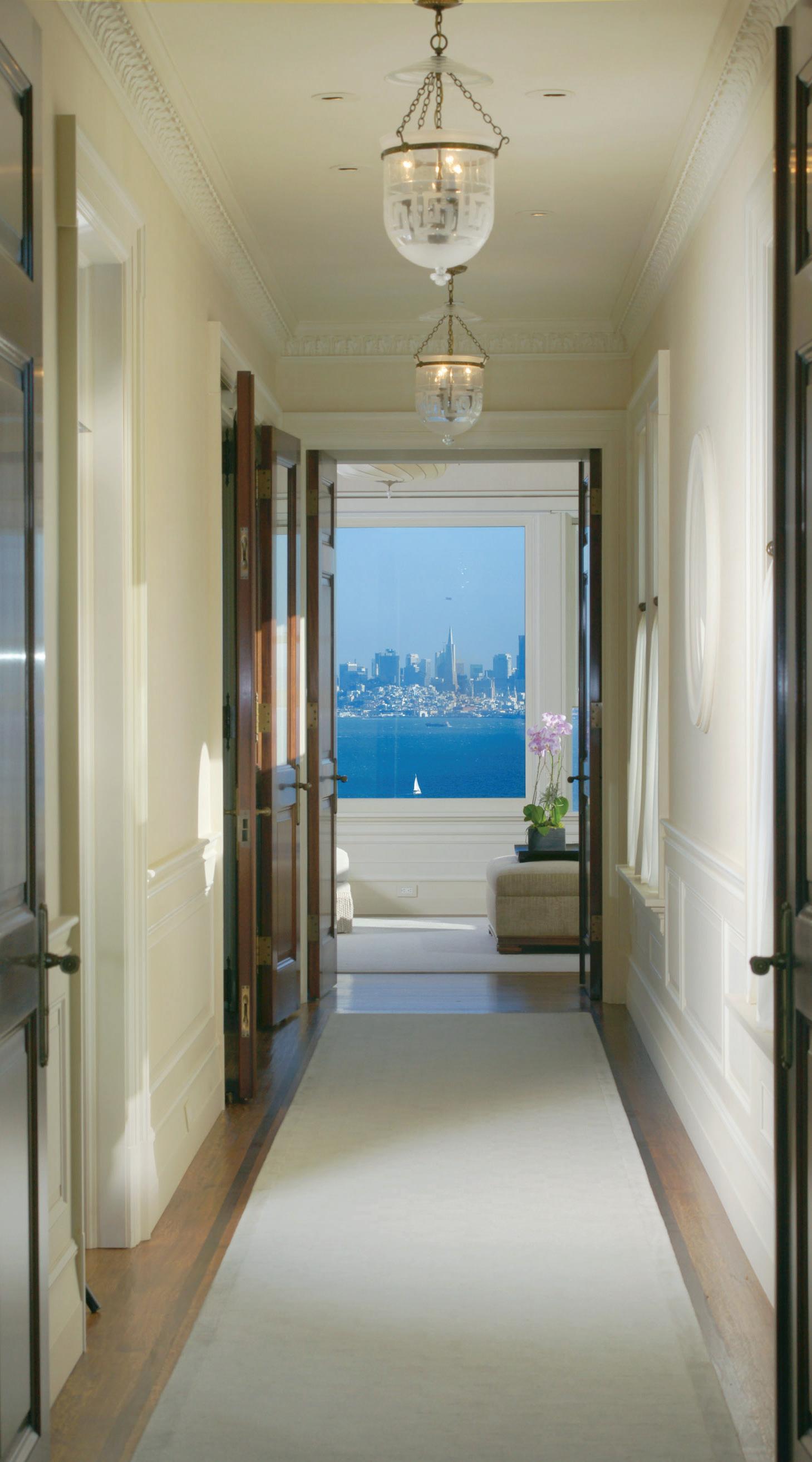

The golden man can be very fickle when it comes to honoring outstanding performances.
 BY JAN WAHL
BY JAN WAHL
A brilliant movie came out in 2008. The kind of movie that makes us love the movies. It was called Me and Orson Welles. Though Zac Efron and Claire Danes got the press, and director Richard Linklater received praise, the centerpiece of the movie is an amazing portrayal by Christian McKay as Welles. McKay brings insight and veracity to Welles as he (in the movie) directs a Mercury Theatre production of Julius Caesar. Every moment of the film flows from this strong, secure performance. Did the film get nominated for any Oscars? As fast as you can say Gloria Swanson in Sunset Boulevard losing the Oscar to Judy Holliday in Born Yesterday — no.
Movies can change our lives; cinema can illuminate and inspire. From Gentlemen’s Agreement to Harold and Maude to The King’s Speech, celluloid moments have stayed in my head and my heart. When I saw The Great Debaters in 2007, I stood up and applauded a true story of courage and action. This film takes place in 1935 and stars Denzel Washington as a professor at a small college in Texas who inspires a successful debate team that goes on to challenge Harvard. Perhaps I loved this smart movie because I was a debater as a student. We all gravitate toward movies that reflect our experiences. I had a speech defect as a child, and The King’s Speech wasn’t about a monarch so much as any of us who tried to defeat stutters and lisps. I took a debating college student friend to see The Great Debaters, and his excitement and
enthusiasm reminded me that great movies live for all of us. There’s no debate. The Great Debaters should have been nominated — but it wasn’t.
When an actor or actress creates an unforgettable character, it is important for the art of cinema and for fans to see that performer Oscar nominated, if not win. Terence Stamp gave a classy, brave and vulnerable performance as Bernadette Bassinger in 1994’s The Adventures of Priscilla, Queen of the Desert. As a transsexual joining two drag queen friends while they travel across the Australian desert, Stamp never tries to make Bernadette the best singer, dancer or comic. She just has tremendous heart, a quality not easy to communicate. Her co-stars Guy Pearce and Hugo Weaving
deserved nominations too, as did writer/ director Stephan Elliott, but it is Terence Stamp’s beautiful Bernadette that has so many of us rooting, “You go, girl.”
Movie buffs all over the world know the name Lina Lamont. As her leading man’s buddy Cosmo Brown (played by Donald O’Connor) describes her, “can’t act, can’t dance, can’t sing — triple threat.” The movie is Singin’ in the Rain. In the 1952 film, actress Jean Hagen lets out all the stops in her portrayal of a vain, clueless silent movie star. Much of this musical classic is based on fact, showing us the tumultuous transition from silent film to talkies and the fate of stars like Lamont who had tremendous egos and did not fathom their careers hanging by a microphone. Hagen steals every frame as Lina, and it is hard to believe she did not win the Oscar for best supporting actress. She


lost it to that fascinating film fatale, Gloria Grahame in The Bad and the Beautiful
When we see Jean Hagen in any other film (The Asphalt Jungle, Adam’s Rib), it’s hard to imagine this is the person who played Lina Lamont. And it’s hard to imagine anyone else playing her.
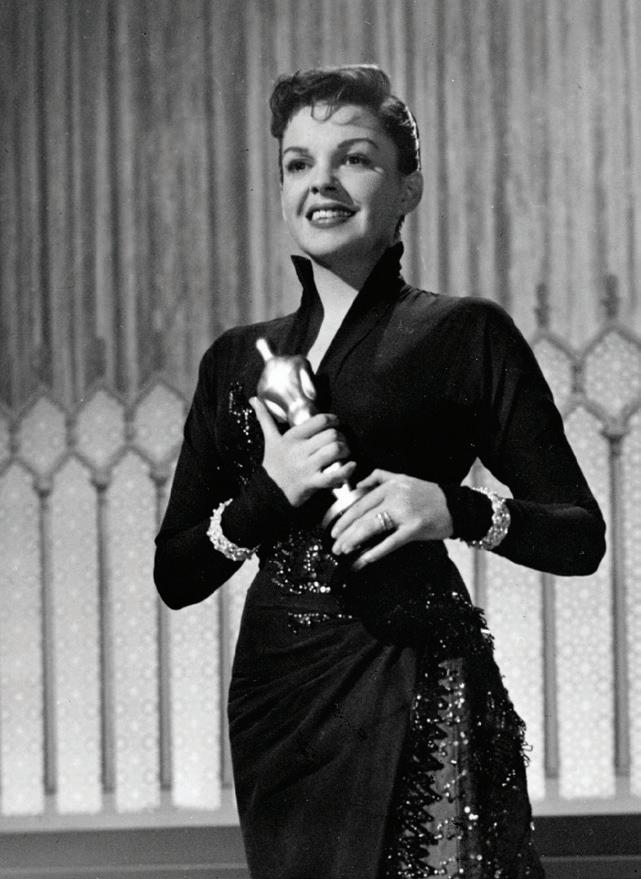
Sometimes there is no answer for a great film being completely passed over for an Oscar other than it was too hip for the house. In 1957 an amazing movie was written by Budd Schulberg and directed by Elia Kazan. Starring an unknown Andy Griffith, it told the story of Lonesome Rhodes, an Arkansas drifter who becomes a media sensation, drunk with fame and power. Like the Paddy Chayefsky/Sidney Lumet classic Network, A Face in the Crowd was ahead of its time in its indictment of the media’s ability to manipulate the masses with image over substance. In his Cahiers du Cinéma review of the film, director Francois Truffaut called it a “great and beautiful work whose importance transcends the dimensions of a cinema review.” No nominations, but a film that lives forever.
Judy Garland and Marilyn Monroe had an important quality in common. Both showed us open wounds. We loved them because we could see their pain. Both gave remarkable performances that should have not only been nominated but taken home the gold. Garland came close with 1954’s A Star Is Born, but lost to Grace Kelly in The Country Girl. Watch Garland in A Star Is Born; it is clear she should have won. Monroe used to say, “It
takes a smart brunette to play a dumb blonde.” She makes that clear in 1961’s The Misfits, a movie where her character is so internally devastated that Clark Gable says to her, “What makes you so sad? … You’re the saddest girl I’ve ever seen.” And she is, a woman trapped in the world of dark and shadows. A brave actress. Never nominated, she reminds us, as does twice-nominated Garland, that talent will win out every time, and will last forever.
The Oscars are a chance for movies to be noticed. For an unfathomable reason, The Night of the Hunter missed all of the categories — nominations or wins. This is a dark movie about a backwoods preacher chasing two children for their father’s money. It’s often terrifying due to director Charles Laughton’s creative use of German Expressionism, including odd camera angles and wicked lighting. How could this film — adapted by James Agee and Laughton from a 1953 novel and starring Robert Mitchum, Shelly Winters and Lillian Gish — be overlooked in 1955? It was the year of On the Waterfront, The Caine Mutiny and Seven Brides for Seven Brothers — but there must have been room for the film David Lynch, Martin Scorsese and the Coen brothers have said influences them to this day. Mitchum, one of our best actors, was only nominated once in his long career, for best supporting actor in 1945’s The Story of G.I. Joe. Guess the academy voters were not impressed

with The Sundowners, Cape Fear or Ryan’s Daughter, to name a few examples of this unusual actor’s work. In Night of the Hunter, he is a living nightmare.
I’ve been a member of the Directors Guild of American for many years. I watch direction carefully, believing in the auteur theory, the idea that it’s one director, one film. It would be tough to argue that Alfred Hitchcock wasn’t in charge of his movies. Yet the academy never gave him a best director Oscar. He was nominated for Lifeboat, Spellbound, Rear Window and Psycho, yet only his film Rebecca won, for best picture, an award taken home by producer David O. Selznick in 1941. Orson Welles’ Citizen Kane was nominated for writing, the award going to Herman J. Mankiewicz, even with the controversy about who wrote what in the sensational script. But for Welles not to win for directing a movie that stays exciting and relevant and changed the face of cinema forever? That would be like never giving a directing Oscar to Frederico Fellini, James Ivory, Arthur Penn, Stanley Donen, Spike Lee, David Lynch, Sam Peckinpah and so many other deserving artists.
This is a subject that can be argued forever, with everyone a critic. That being said, the Oscars are important in that they remind us of quality over box office, whether we are rooting for our favorites or remembering work that should have been recognized. Any time and any way we celebrate the cinema, we’ve won the gold.
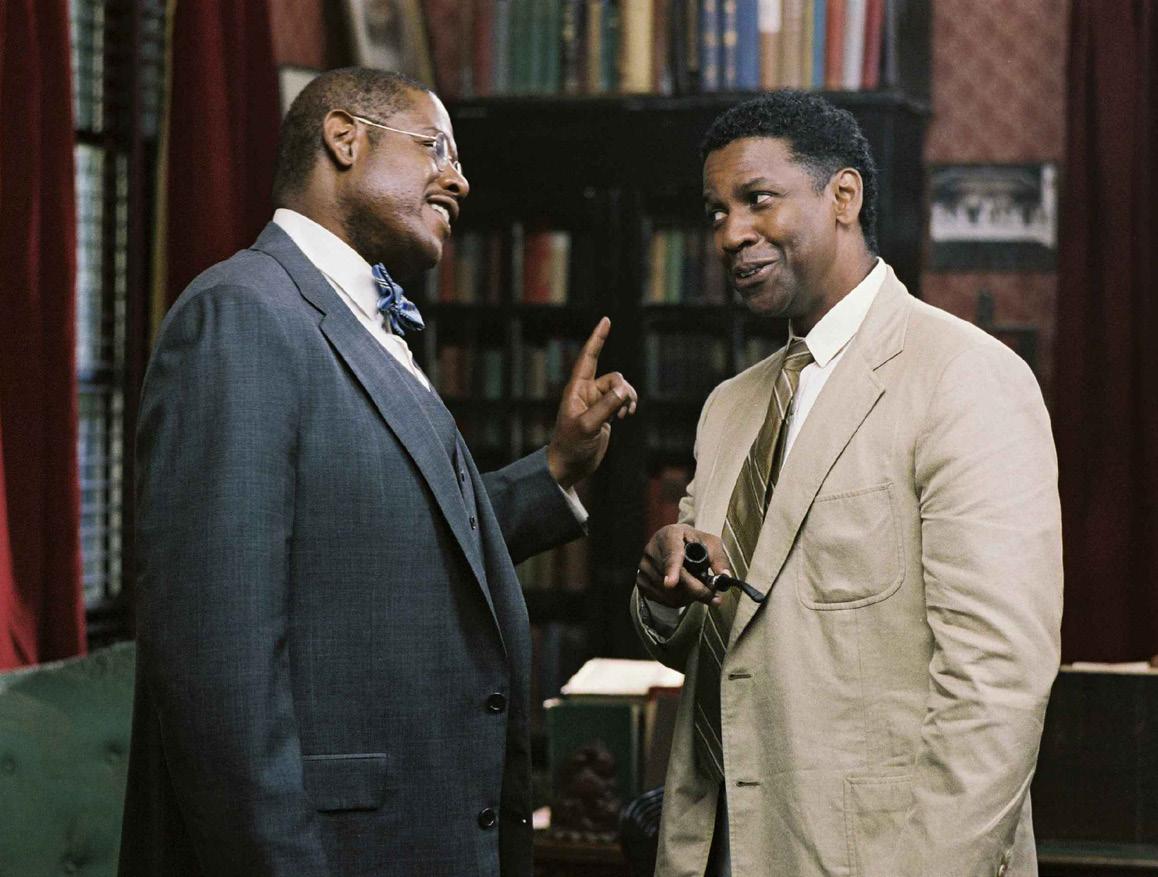
Every year, hundreds of filmmakers flock from all around the world to show their films at the Mill Valley Film Festival, yet out of thousands of entries and despite the rigorous judging, movies made in the Bay Area or by local directors always make the cut. Here are a handful of bay-centic entries screening this year.
Filmmaker Elizabeth Sher A celebrated criminal attorney, lesbian and supporter of the arts, Penny Cooper, aka “champion of the marginalized,” has been an integral figure in many societal changes from the 1940s to today. Penny tells the story of Cooper’s mission to make a difference in the lives of others, all while maintaining a positive outlook amid her own set of struggles.

Filmmaker Brian Perkins Perkins will be debuting his first feature, The Golden Kingdom, for what is also the film’s U.S. premiere. The picture portrays the peaceful lives of four young Buddhist monks (nonactors) and their abbot in a remote mountain monastery in Myanmar. The serenity is shattered one day when the abbot needs to make a perilous trek through a mountain pass in order to get to the city.
Filmmaker Eli Adler Surviving Skokie is a documentary that focuses on Adler’s father, Jack, a Polish immigrant and concentration camp survivor who built a life and raised a family in Skokie, Illinois. The freedom America allows reveals its dark side when a group of neo-Nazis plans to march through the town that has become a haven for hundreds of survivors.
Director and Producer James Redford Paper Tigers examines an unlikely teaching method
being implemented in Lincoln High’s classes for troubled teens: unconditional love. Redford follows Walla Walla, Washington, high schoolers in his sixth documentary about responses to the problems of our times.

Filmmaker Robin Hauser Reynolds The documentary explores a topic very relevant to Bay Area residents: the history and current state of tech and the computer science industry, especially vis-a-vis women and people of color. In Code:

Debugging the Gender Gap ’s California premiere, Reynolds looks at these industry workers and presents their stories and views on the benefits (creative and financial) and downsides (sexism and racism) of their profession.
Filmmaker Marlene Morris Edythe Boone teaches public art to everyone from West Oakland middle schoolers to Richmond high school seniors, and her past is equally wide-ranging. Morris follows Boone, whose art can be found all over the Bay Area, taking in the great events of her time. These events keep coming, as we see when the death of Boone’s nephew, Eric Garner, becomes a national symbol for racist policing in the world premiere of A New Color: The Very Public Art of Edythe Boone
Filmmaker Amir
Soltani Dogtown Redemption focuses on the lives, histories and struggles of Oakland recyclers who trek as far as 10 miles with recyclables that often weigh upwards of 100 pounds, for a meager payout. Soltani’s interviews raise questions about socioeconomic realities and paint a compelling picture of an invisible group.











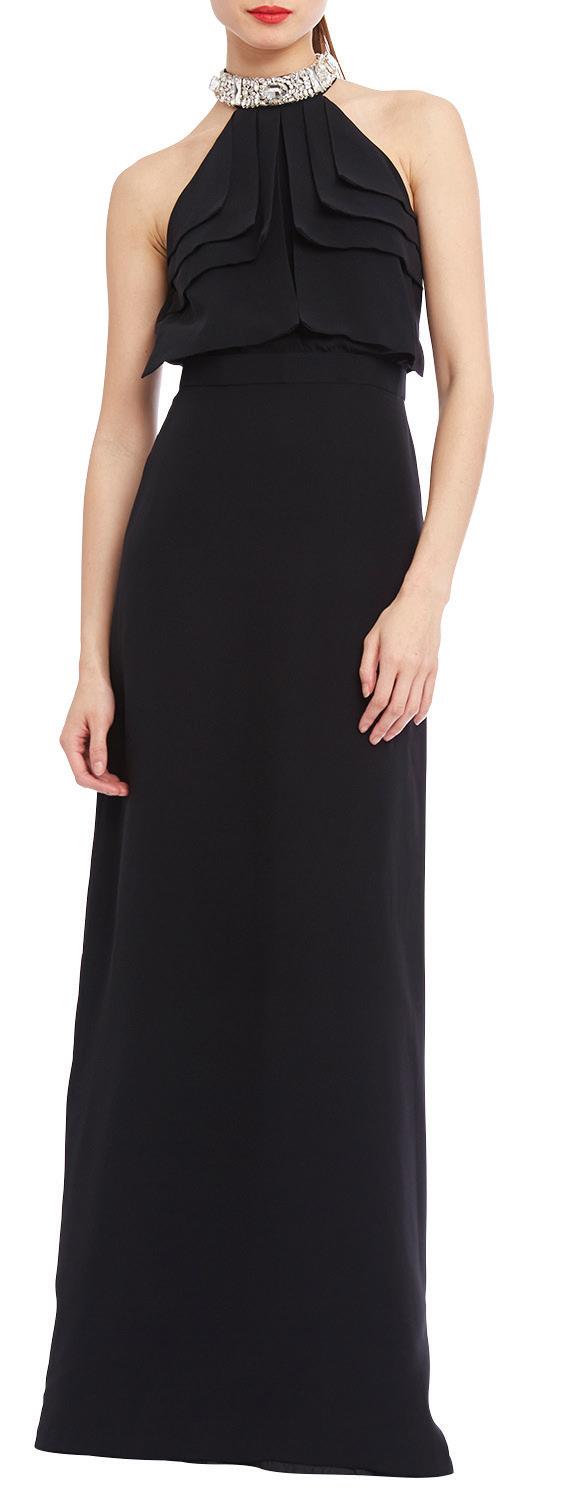

Bling is the thing when the lights are on and your audience is waiting.
BY VERONICA SOOLEY
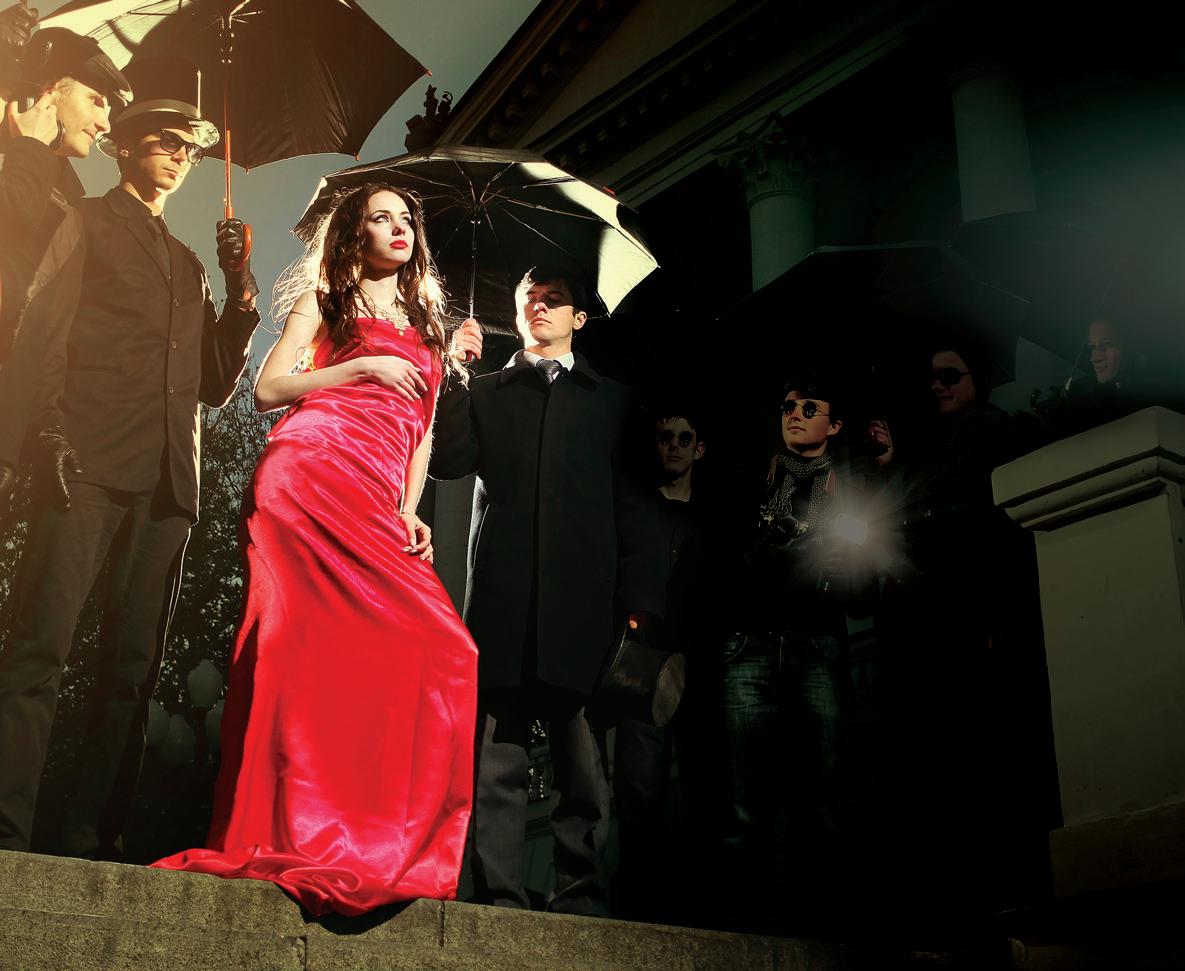






















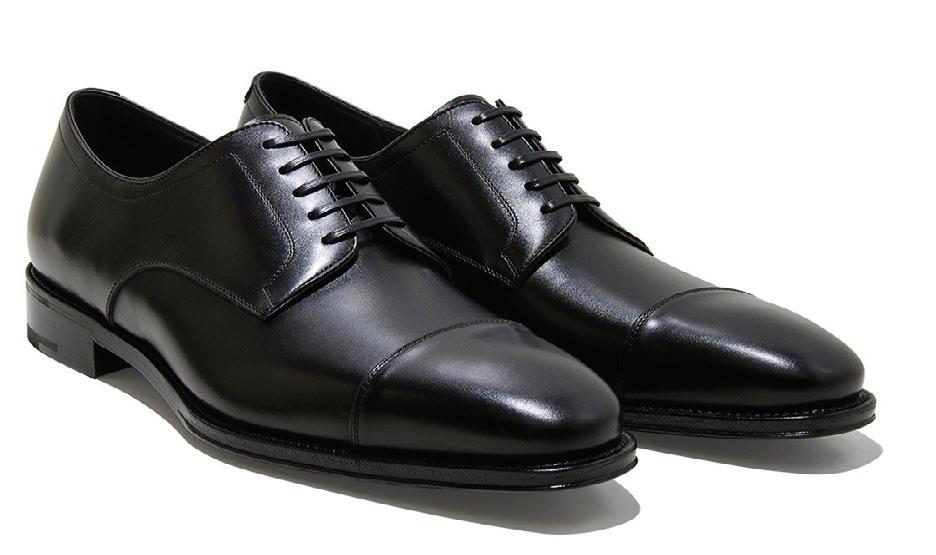

Whether you are escorting your leading lady or just arriving solo, these items will help you look your best.
BY VERONICA SOOLEYCap-toe derby, $795, at Salvatore Ferragamo (SF), 415.856.5466. Ballon Bleu de Cartier (large model) watch by Cartier, $6,550, at Tourneau (SF), 415.459.5808. Millbank basic tuxedo by Burberry London, $2,295, at Saks Fifth Avenue (SF), 415.986.4300. 14k rose gold garnet cuff links, $1,650, at Lang Antique & Estate Jewelry (SF), 415.982.2213. Woven silk jacquard bow tie by Duchamp, $125, at Barneys New York (SF), 415.268.3500. White satin evening shirt by Eton, $275, at Gene Hiller Menswear (Sausalito), 415.332.3636. Metal collar stays by Jan Leslie, $150, at Wilkes Bashford (SF), 415.986.4380. Digit bill clip, $390, at Louis Vuitton (SF), 415.391.6200.

Marinhas been a featured player in many films, its striking landscape a directors’ favorite for romantic interludes, stagecoach chases and sock hops. The 1914 silent film classic Salomy Jane got things started and the infatuation has continued all the way to films like Blue Jasmine in 2013. Keep your eyes peeled for camera crews seeking that next great scene, but in the meantime, here’s a map of location highlights from days past.
—LAUREL MCCAULLThe Birds 1963, Bodega Bay Screaming children take refuge in St. Teresa of Avila’s Church.
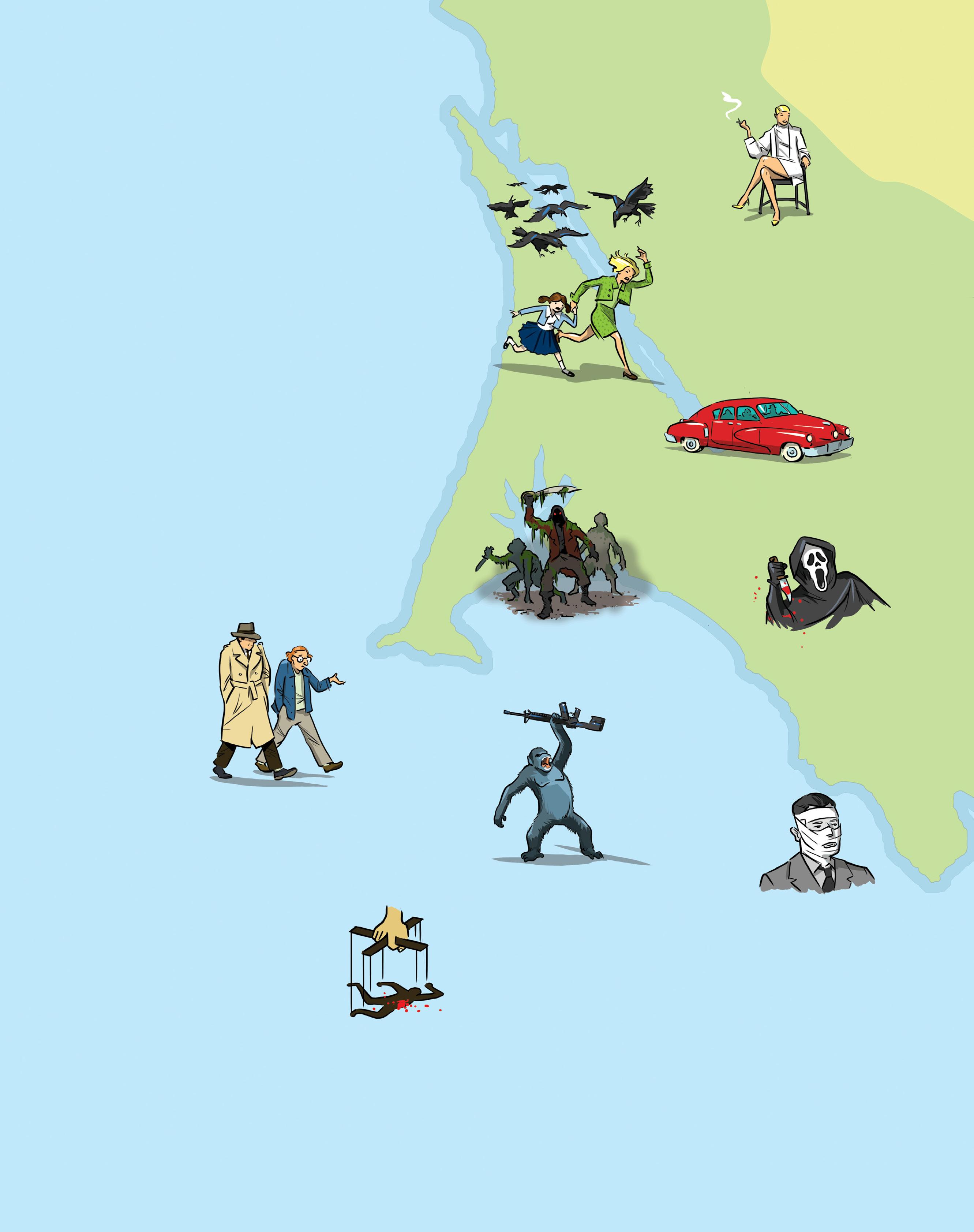
The Godfather 1972, Ross Kay Adams and Michael Corleone stroll down a tree-lined street.
Play It Again, Sam 1972, Sausalito and Stinson Beach Woody Allen and cast members visit the beloved Trident Restaurant.
The Fog 1980, West Marin Point Reyes Station serves as the town of Port Antonio.
Basic Instinct 1992, San Rafael Scenes at a college were filmed at Dominican University.
Tucker: The Man and His Dream 1988, Mount Tamalpais Tucker drives his iconic car along a winding Marin road.
Scream 1996, Tomales Bay The real Stu’s house can
Dark Passage 1947, San Quentin Shots of the prison appear as Parry makes his escape.

Rise of the Planet of the Apes 2011, Muir Woods Mostly shot in Vancouver, but Muir Woods has some cameos.
Indiana Jones and the Raiders of the Lost Ark 1981, San Anselmo
Near Drake High, cameras captured exterior shots of Jones’ home.
Salomy Jane 1914, San Rafael Jane and Jack share a famous kiss near Lagunitas Creek.
Indiana Jones and the Temple of Doom 1984, Novato Airport scenes were filmed at the Hamilton Air Force Base.
Foul Play 1978, Sausalito and Belvedere
Openingcredits drive in Sausalito; party scene in Belvedere.
American Graffiti 1973, San Rafael Fourth and Main streets serve as the main drag.
Gattaca 1997, San Rafael
The Marin Civic Center served as the space exploration agency.
The Right Stuff 1983, Novato
Location shooting largely occurred at Hamilton Air Force Base.
Star Wars Episode VI: Return of the Jedi 1983, Woodacre
Jedi wound around Roy’s Redwood Preserve’s tall redwoods on speedy bikes.
Bandits 2001, Mill Valley

Some scenes were shot at the Fireside Motel, 115 Shoreline Highway.
Dirty Harry 1971, Larkspur
The final showdown was shot at the Hutchinson Rock Quarry. Blue Jasmine 2013, Belvedere Future lovers meet at a mansion on Britton Avenue.






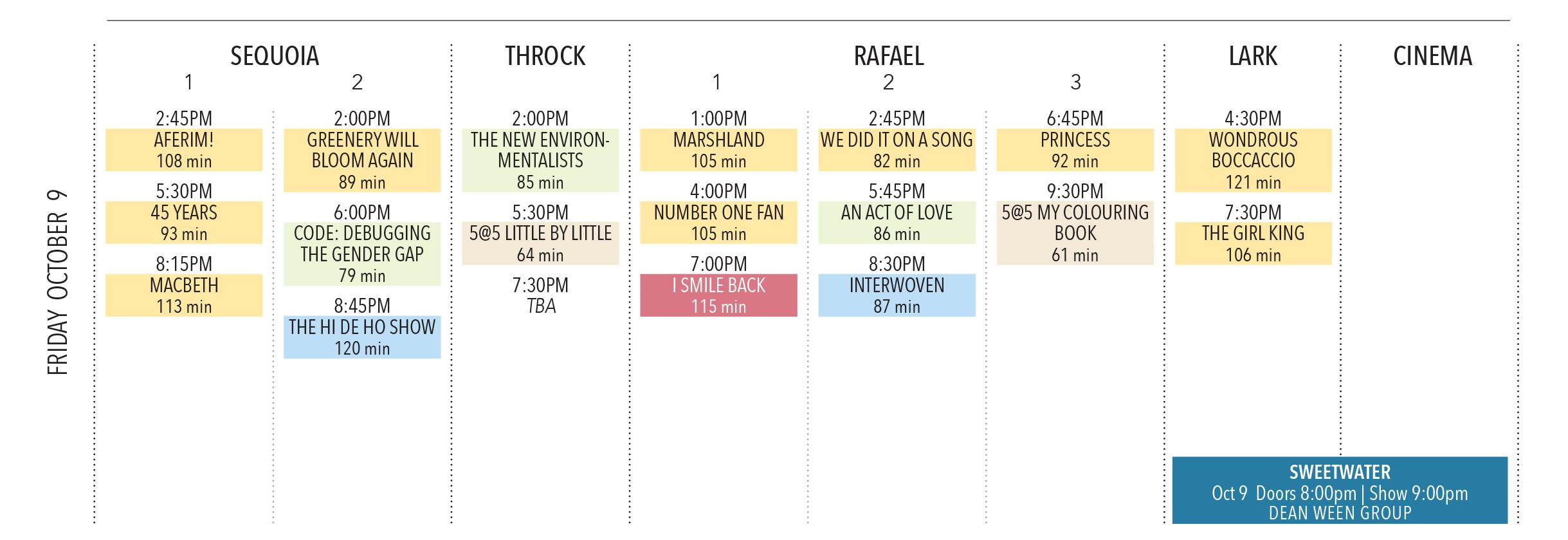

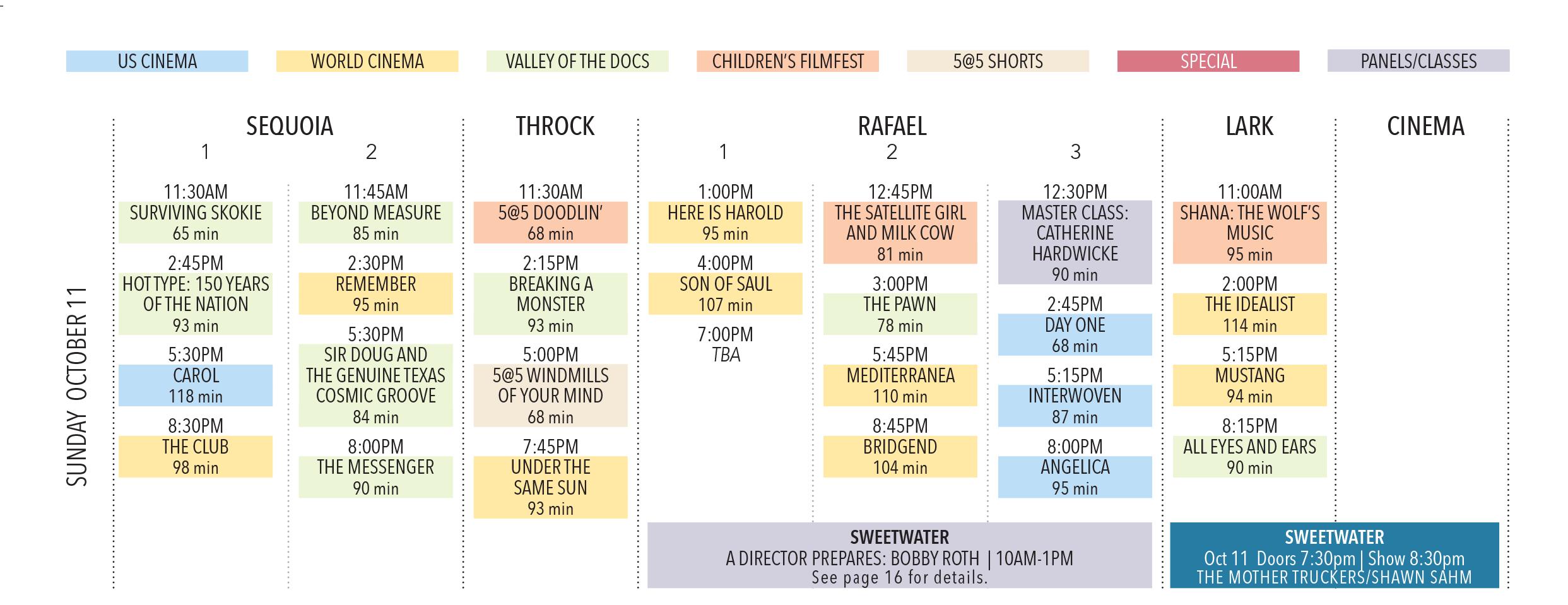









● Submit your Audience Award ballots after each screening.
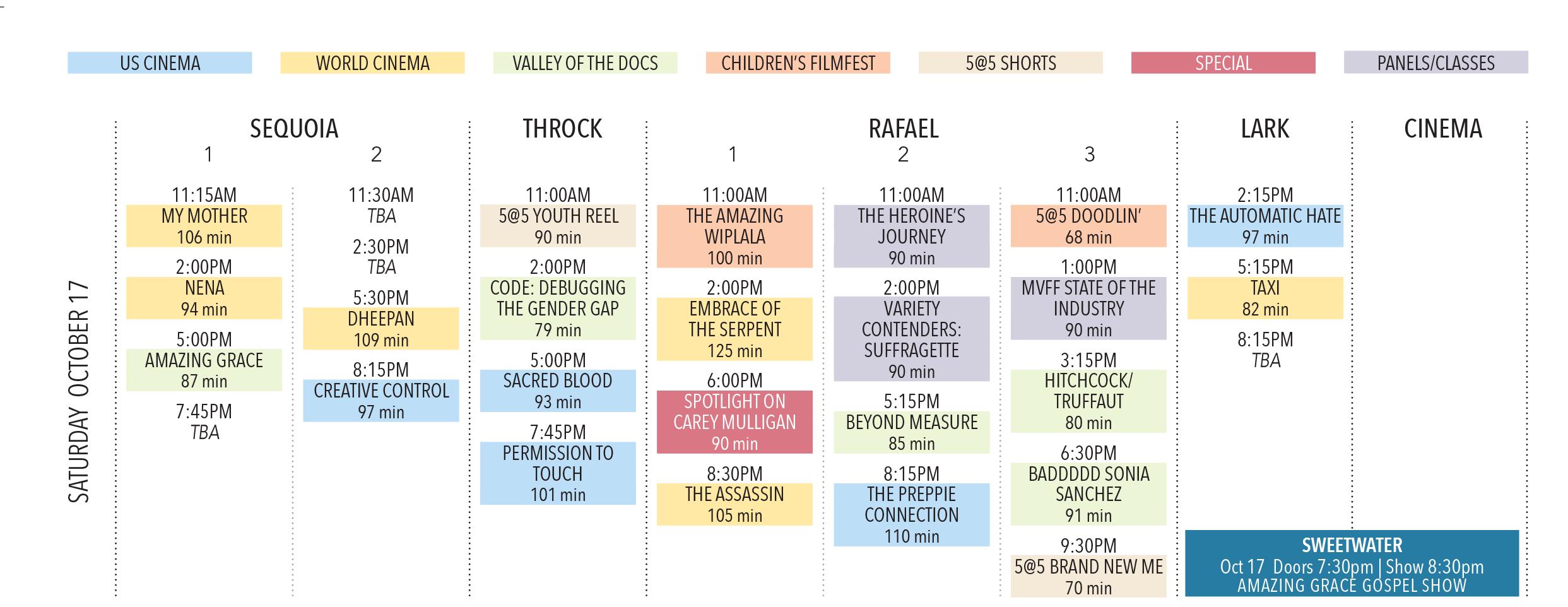
● No tiny pencils needed.
● Just tear the ballot on the arrow to select your rating.
● Drop the ballot in the ballot box on your way out of the theater.
Only you decide who wins an MVFF Audience Award. Every Vote Counts


Support is a natural part of our business and probably why Realtors are still a necessary part of the home buying and selling process. It’s not just about putting up a sign or sending you listings via the MLS. It’s about making sure you’re well informed, well prepared and set up for success. That’s what we do. Support you through the process and make sure you get exactly what you want. We don’t need to be the star... that’s you and your home. We’re just happy to lend a supporting hand.






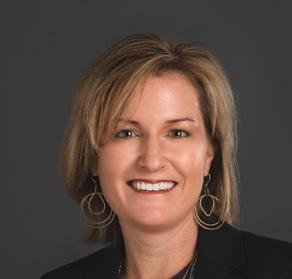
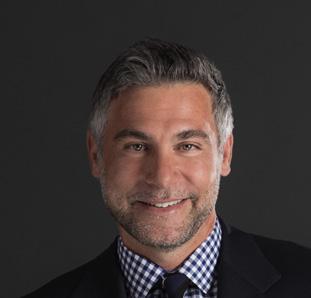
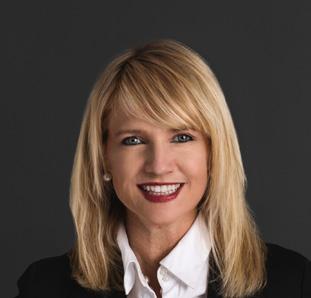
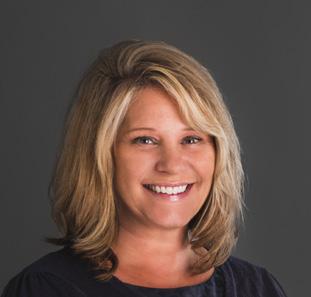




Corte
CA | T: 415.758.6800
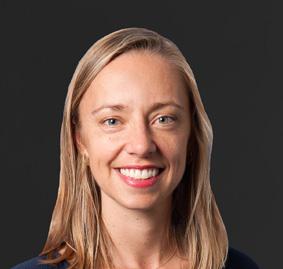

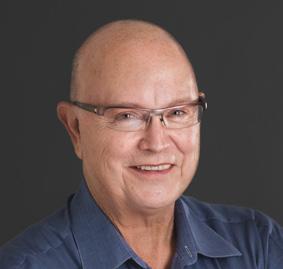


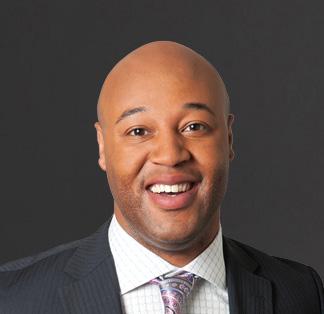



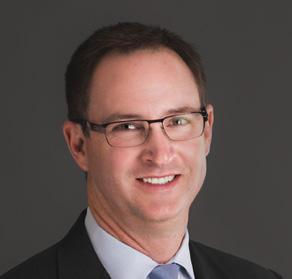

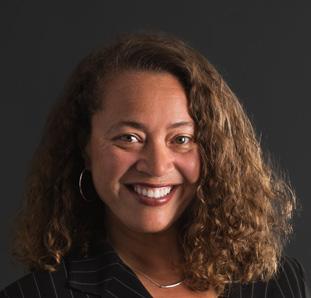

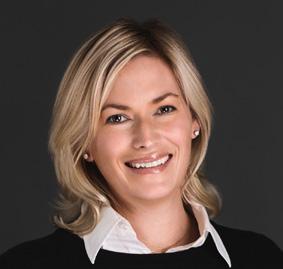



 Susan Bowman
Jennifer Bowman
Kevin Brown
Susan Bowman
Jennifer Bowman
Kevin Brown
Despite Lucas’ phenomenal success and unquestionable influence in the medium of film, it’s not difficult to imagine an alternate universe in which Star Wars does not exist. Lucas, raised in Modesto, was an extremely shy child who did not instantly gravitate toward film the way his contemporary Steven Spielberg did. As a teenager, he was passionate about race cars and imagined a future racing or designing automobiles, not writing
screenplays about starships or directing special effects to simulate light speed.

But a life-threatening car accident shifted his focus from auto designer to auteur. Applying to college, Lucas learned of a filmmaking program at the University of Southern California, where he attended and excelled. His 1967 short film Electronic Labyrinth: THX 1138 4EB won first prize in a national student film competition.

George Lucas paved the road to faraway galaxies with a down-to-earth car comedy. BY
This December, millions of moviegoers will line up outside multiplexes from Paris to Perth to see the seventh episode in the Star Wars saga. The Force Awakens will continue the adventures of Leia and Luke, Han and Chewie, Darth Vader and Boba Fett — mythological heroes and villains from the mind of San Rafael resident George Lucas, characters who have inspired our cultural consciousness the way Zeus and Medusa figured into yesteryear’s storytelling circles.
Lucas would expand on the short in his first feature, THX 1138, a sci-fi story about an antiseptic future in which sex is forbidden and sedation is mandatory. The film mixes the concepts of Huxley’s Brave New World and Orwell’s 1984 with a powerful visual style. Local sites like BART stations, freeway tunnels and the Marin County Civic Center blend beautifully with sterile white sets and shots of Robert Duvall’s shaved head.
THX 1138 flopped at the box office and nearly caused the ruination of American Zoetrope, a San Francisco–based independent studio created by Francis Ford Coppola to help young filmmakers like Lucas make movies outside the Hollywood system.
Coppola suggested Lucas create a more optimistic movie than his dystopian debut, which brought Lucas to his career crossroads project. American Graffiti, a coming-of-age comedy following teenagers throughout the last night of a 1962 summer, was the make-orbreak picture that would bridge the gap between THX 1138 and Star Wars
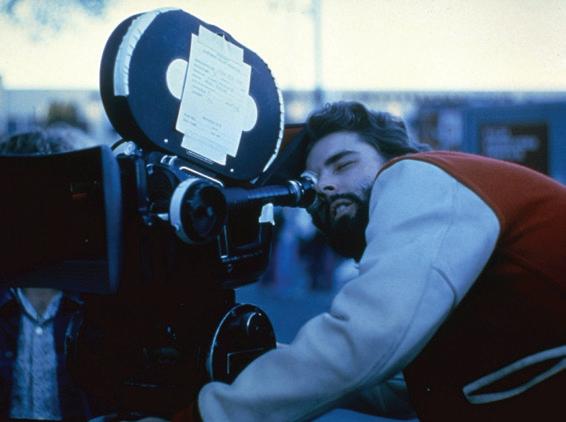

“I came up with the idea of doing the movie in the (late) 1960s, during the hippie culture. Cruising was gone,” Lucas says in the documentary The Making of American Graffiti. “I felt compelled to sort of document the experience of cruising and what my generation did as a way of meeting girls, what we did in our spare time. I wanted to document the end of an era, document how things change through life passages and to parallel that with what was going on in the United States at that time. The loss of innocence, getting into the Vietnam War … all these issues that center around change.”
Lucas’ examination of innocence may have seemed simple enough on the surface, but American Graffiti is a groundbreaking movie in many ways. The film’s narrative structure, following four main characters with intersecting story lines, was a novelty in American cinema. The film’s sonic texture was also a game-changer: American rock ’n’ roll and pop songs from the late 1950s and early 1960s play
Valley home. The first location selected for the cruising sequences was San Rafael’s downtown.
“We started filming in San Rafael, but a bar owner complained that all the film trucks and equipment were bothering his customers,” says actress Candy Clark, who is unforgettable as the sexy, somewhat hard-edged Debbie in the film. “So we packed up and moved the production to Petaluma.”
constantly, evoking a nostalgic feeling of a very particular time, just before the British invasion. Lucas acquired the rights to more than 40 well-known tunes for $80,000, an incredible bargain by today’s standards.

Lucas shot American Graffiti over 27 nights in the summer of 1972. The movie was supposed to evoke Lucas’ teenage experiences in Modesto, but the filmmaker decided to shoot the movie in the North Bay, close to his Mill
Petaluma leaders welcomed the crew to come shoot every night for a month. Night after night, Lucas and cinematographer Haskell Wexler filmed a cast of then-unknown young actors — including Clark, Ron Howard, Cindy Williams, Richard Dreyfuss and Harrison Ford. Locally the film remains a major point of civic pride, and Petaluma hosts an annual hot rod event called “Cruisin’ the Boulevard” to celebrate the film’s connection to the town.

“I wanted to document the end of an era, document how things change through life passages and to parallel that with what was going on in the United States at that time.”
Lucas also shot in San Francisco at a Mel’s Drive-in that was torn down soon after. A high school sock hop scene was filmed at Mill Valley’s Mount Tamalpais High School, and the “lovers’ lane” sequence, in which actors Clark and Charles Martin-Smith sneak off to kiss, happened near a tributary of the Petaluma River just north of the Novato airport. The film’s climactic drag race was shot at dawn on Petaluma’s Frates Road.
When it came time to screen the film, Lucas made sure Universal’s executives watched it with a packed house of young moviegoers. Every subsequent screening was like a party; audiences loved to ride along with the characters in American Graffiti. Remarkably, the studio heads were still unconvinced the film would be a hit and contemplated relegating the movie to drive-ins or TV.
In the documentary Fog City Mavericks, American Graffiti producer Frances Ford Coppola describes his frustration with a Universal executive following a packed screening at San Francisco’s North Point Theater. Coppola lectured the skeptical executive, pointing out the wildly enthusiastic audience response: “You should be on your hands and knees thanking this young man (George Lucas) for what he has given you,” he said.
Candy Clark remembers seeing the film for the first time in Los Angeles. “When the film started, and ‘Rock Around the Clock’ came on the sound track, people jumped out of their seats and screamed. I thought, ‘We’ve got a hit.’ ”

Had American Graffiti bombed like THX 1138 , audiences likely would have never met R2-D2 or Boba Fett. But American Graffiti succeeded, on a massive scale — it remains one of the most successful films in history in terms of budget to box office. The modest $750,000 picture raked in $115 million in the U.S. alone (adjusted for inflation, that adds up to more than half a billion in today’s dollars and ranks Graffiti in the top 50 most popular movies of all time).

The movie was popular with most critics, although the San Francisco Chronicle panned the film with an “empty chair,” complaining that the movie was “in a class by itself when it comes to tedium.” American Graffiti wound up being nominated for five Academy Awards, including best picture, best director and screenplay, best film editing and best supporting actress for Clark.
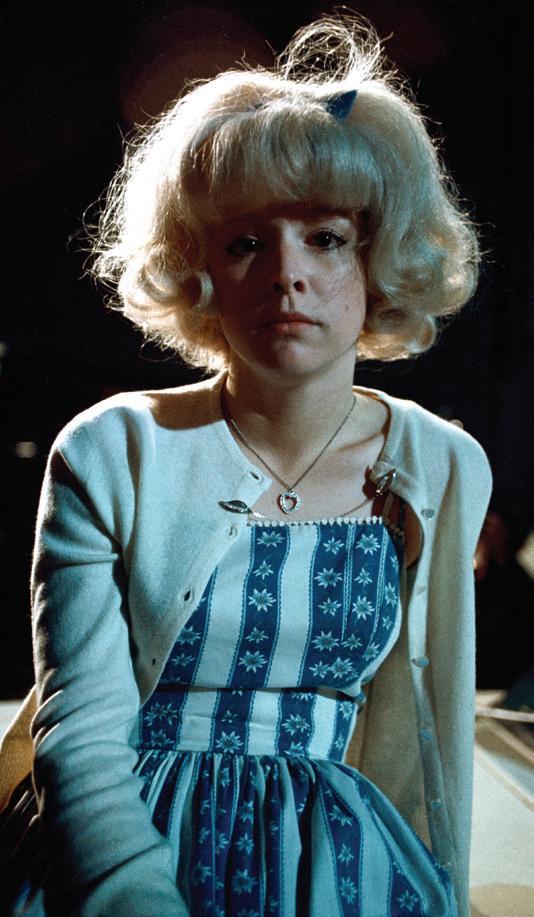
Clark says her experience making the movie and the recognition it has brought her is “one of the great experiences of my

Borrow the DVD or film soundtrack from the Marin County Free Library
Rent the movie on Netflix or stream on Amazon
Read the original script at the Anne T. Kent California Room at the Civic Center branch of the Marin County Free Library
See a detailed map of locations used in the film here: americangraffiti.net/ filming-locations
life. I’ve met people who say they went to see it nine days in a row in the theater,” she adds. “The guitarist Jeff Beck once told me that he has seen the film more than 3,000 times.”
Lucas, of course, went on to create Star Wars next, which became one of the biggest box office blockbusters and one of the most influential entertainments of all time. It’s easy to forget that 20th Century Fox’s production of Star Wars wasn’t a particularly big-budget film, and Lucas had to deal with issues of studio pessimism similar to those plaguing him before American Graffiti was released. So when it came time to make the Star Wars sequel, The Empire Strikes Back, Lucas financed the film himself so he would not be beholden to the studio. The gamble paid off in a big way, and Lucas was able to build Skywalker Ranch, his high-tech dream factory in San Rafael.
It’s interesting to note that the newest chapter in the Star Wars series, The Force Awakens, will be directed by J.J. Abrams, who was just 11 years old when the first Star Wars was released. A new series of Star Wars sequels and stand-alone adventures will be helmed by directors whose young minds were thrown into hyperdrive, thanks to Lucas’ imagination.
It’s safe to say that this is George Lucas’ galaxy. We just live here.
Special features and programs you won’t want to miss.
BY KASIA PAWLOWSKAOpening Night Film and Gala
When: Thursday, October 8
MVFF launches with a highly anticipated opening night film and an opening night gala at Marin Country Mart. The evening will be filled with cinema, local cuisine, music and flowing spirits, shared with attending special guests, filmmakers and film fans.
New Full Run Venue
This year, festival attendees will enjoy a full run of screenings at the Lark Theater in Larkspur throughout the event in addition to the daily shows at the Smith Rafael Film Center in San Rafael and the CineArts Sequoia in Mill Valley.
MVFF Music: Live at the Sweetwater Music Hall
Also new this year, MVFF will be in residence for nine nights at the Sweetwater Music Hall, offering worldclass live entertainment for attendees and guests. Past MVFF music events have featured artists from festival films as well as other special guests including Elvis Costello, Bob Weir & RatDog, Bonnie Raitt, Dan Hicks, Don Was, Charlie Haden, Blind Boys of Alabama, Taj Mahal, Les Claypool and Narada Michael Walden, among many others.
The festival continues its commitment to female filmmakers with a festivalwide focus on inspiring women in
film. Expect screenings and onstage conversations with directors, producers and actors as well as big movies with story lines driven by female characters. Also look for documentaries addressing inequalities and other issues (such as CODE: Debugging the Gender Gap and La Prenda / The Pawn), panels (Stacy Smith of USC’s Annenberg School of Communication and Journalism returns to report on her newest media research) and educational screenings.
Active Cinema Nature Hike
When: Saturday, October 10
Some of the best information is communicated in peer-to-peer connections. Everyone is invited to join the festival staff on a hike and exchange thoughts on filmmaking, resources, activism and strategies for action. Get some fresh air and circulate fresh ideas with filmmakers, friends and cinephiles during the hour-long hike through beautiful terrain.
Wizard of Oz
When: Friday, October 16
Free family screening in Old Mill Park in Mill Valley; begins at sundown.
Children’s FilmFest
When: October 10–18

Tour the world with your family at the MVFF Children’s FilmFest, celebrating its 21st year of showcasing the finest family films from around the world.
Spotlight: Sarah Silverman

When: Friday, October 9
The Spotlight program will feature a conversation with Sarah Silverman and a screening of I Smile Back. Silverman will be presented with the MVFF Award, designed by Mill Valley artist Alice Corning.
Closing Night Party
When: Sunday, October 18
MVFF concludes in grand style by featuring an acclaimed closing night film and follows it up with a huge closing night party at Terrapin Crossroads in San Rafael. Enjoy beverages and dance the night away to live music with fellow festivalgoers, filmmakers and special guests.


 BY PETER CROOKS
BY PETER CROOKS
Laurie Thompson remembers the feeling that overwhelmed her when she first learned of the 1914 silent film Salomy Jane. Thompson, a librarian at the Marin County Civic Center public library and a dedicated historian of the North Bay, needed to see the film.
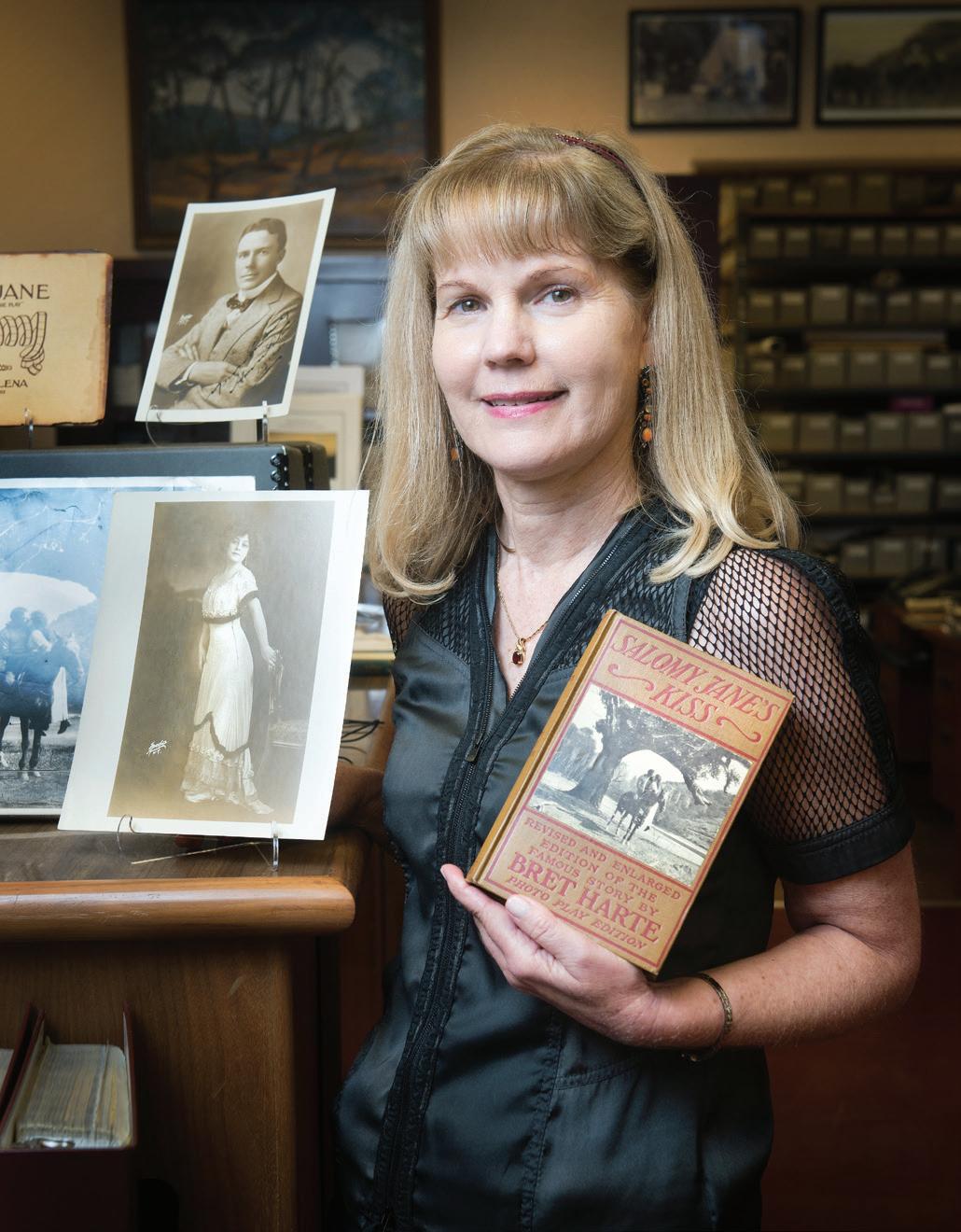
“My mentor Bill Sager, the longtime archivist for the Fairfax Historical Society, told me about this wonderful Western film that was made in 1914,” she says. “It was filmed right here in Marin County before so much of the area was developed.”
Thompson was even more intrigued when she learned that Salomy Jane was long believed to be a lost artifact of the silent film era, and a copy had only been recently rediscovered in Australia and immediately sent to the U.S. Library of Congress.
When Thompson sat down to watch the movie, it did not disappoint. “When I finally saw it, I was taken not only
with the film itself but with how Marin County and the beauty of California were highlighted.”

Salomy Jane was the most successful picture from the California Motion Picture Corporation (CMPC), an ambitious production company that set up shop in San Rafael in 1913, building a state-of-the-art studio on a 10-acre lot in what is now the Sun Valley neighborhood.
“The founders of the California Motion Picture Corporation had a strong vision to produce films that would celebrate the history of California,” Thompson says. “They wanted to show things that were unique to the state that
people in other parts of the world would have only read about, such as beautiful, giant redwood trees.”
In 1914, CMPC produced three films: the comedy Mrs. Wiggs of the Cabbage Patch , a documentary about the Pageant of San Francisco, and Salomy Jane , an epic Western based on a popular Bret Harte novel set during the California Gold Rush.
The latter movie starred Beatriz Michelena, a stage and vaudeville actress and the daughter of a famous opera singer. Michelena would become the studio’s main attraction; her husband, George Middleton, was one of the principal investors in the CMPC
COMING
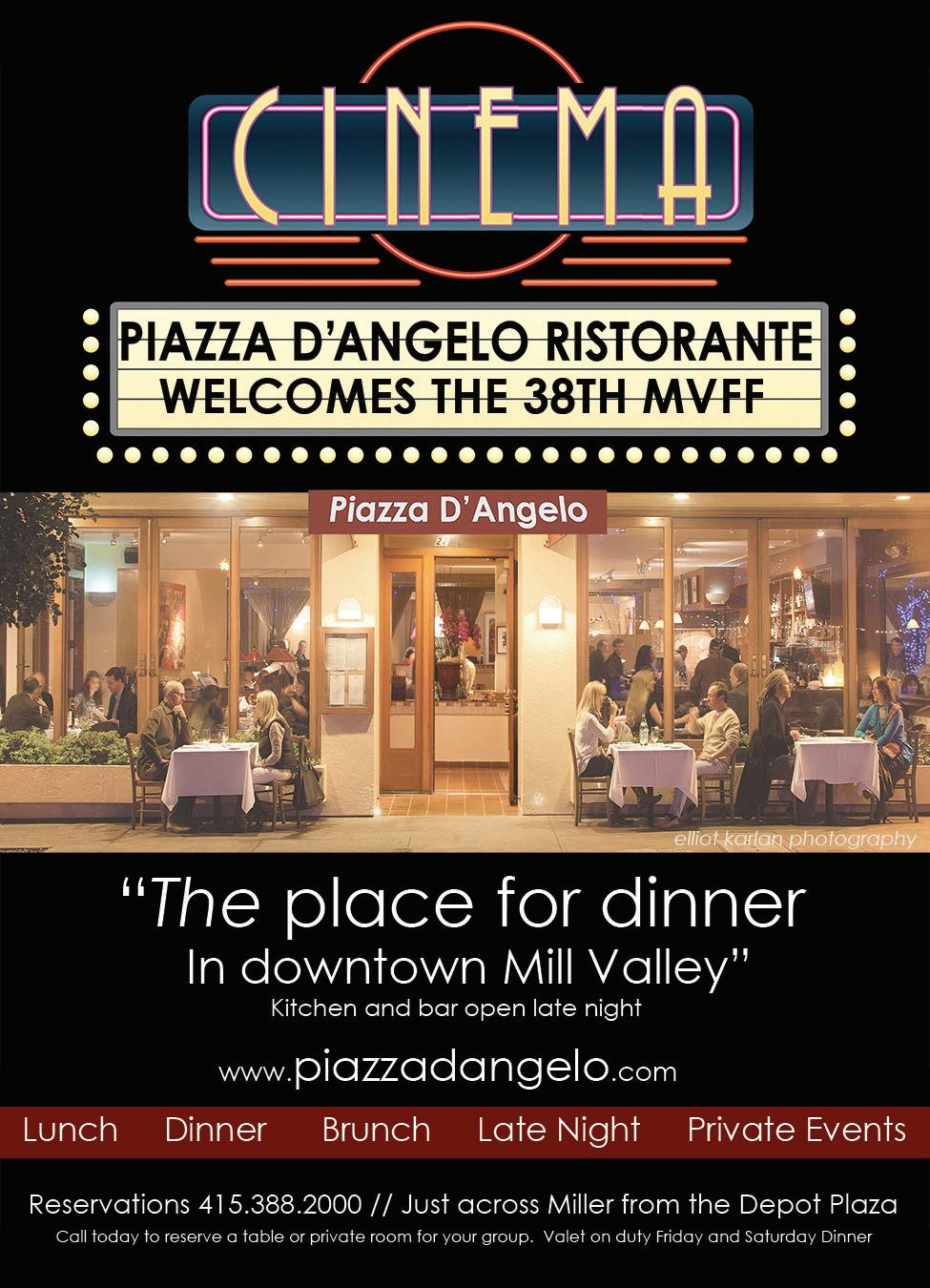






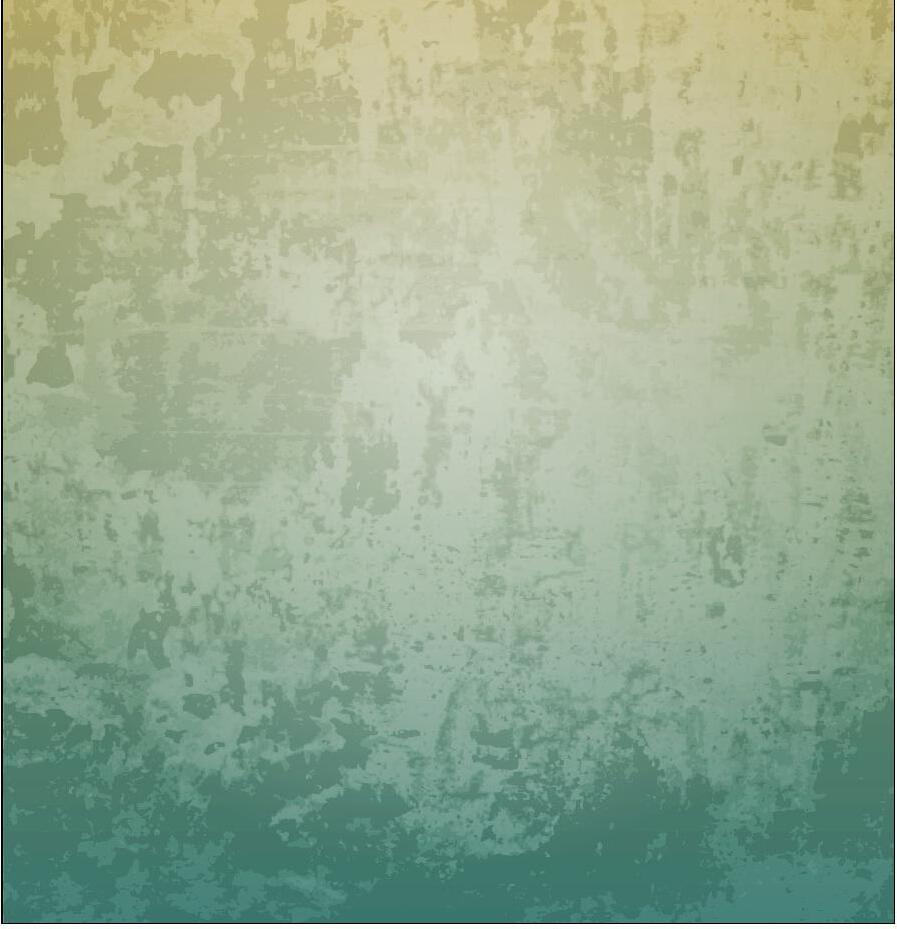

Michelena’s title character and a cowboy played by Hollywood hunk House Peters.
“It’s the story of a beautiful young woman, who is saved from a ruffian by a heroic stranger,” Thompson says. “Later, she comes back and saves the stranger from a lynch mob. And of course, they fall in love.”
While the story may seem like standard melodrama, the filmmaking craft is extraordinary. “There’s no doubt that Salomy Jane is a great action film,” says Thompson. “There is a remarkable stagecoach chase scene, with the coach coming down Fairfax-Bolinas Road. The road at that time was unpaved, the area undeveloped. The chase is very fast-moving, and the camera work is wonderful, especially when you consider the size and weight of film cameras of that period.”
Thompson has studied the film repeatedly, trying to spot locations around Marin County. The studio constructed an elaborate set for Hangtown, where Salomy Jane takes place.
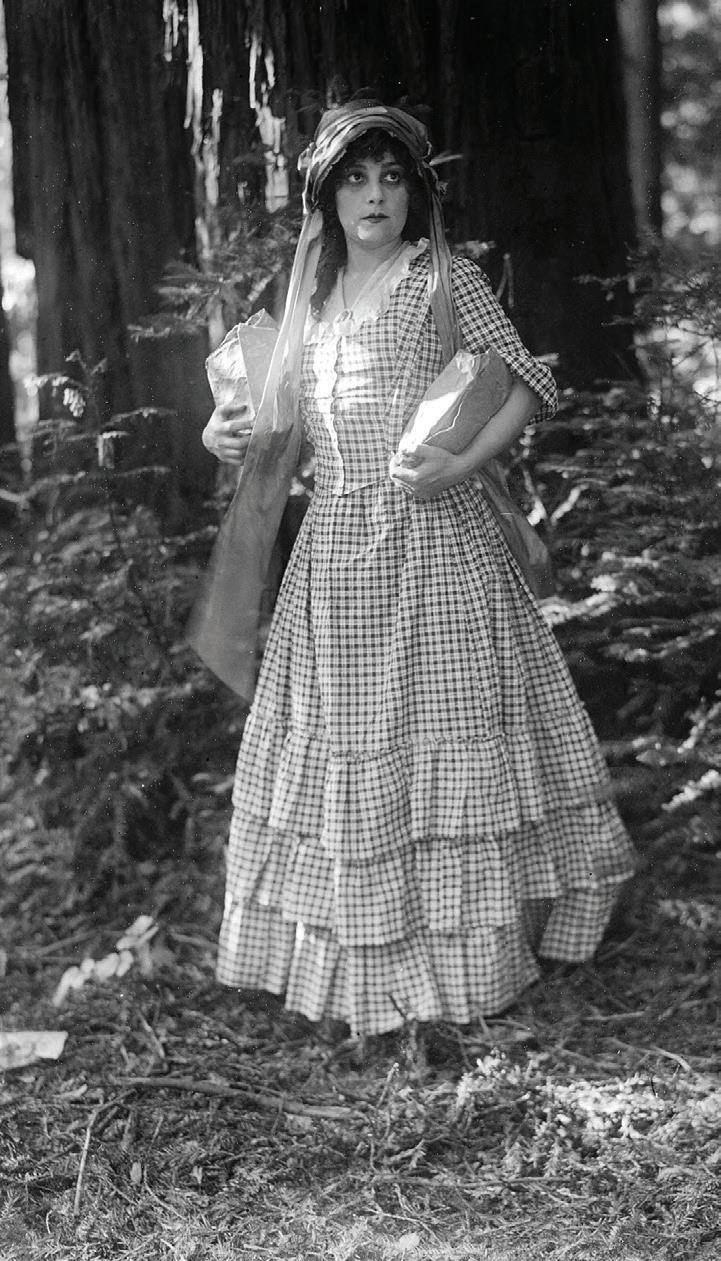
“The set for Hangtown was built in the Lagunitas area of Marin County, somewhere between the town and Samuel P. Taylor park,” she says.
of an enormous interior stage with glass walls to capture natural light — brought on bankruptcy within a decade. The studio shut down in the early 1920s and kept all its prints in a vault on property. In 1931, a fire burned the studio to the ground. The blaze, possibly started by children playing with fireworks, ignited the highly flammable nitrate prints and destroyed the company’s inventory.
For more than 60 years, film historians mourned the loss of the California Motion Picture Corporation’s cinematic treasures. And then the six-reel print of Salomy Jane was discovered in Australia.
When Thompson requested the print of Salomy Jane from the Library of Congress, she made sure she wasn’t the only Marin County resident to enjoy the film. Thompson has organized two screenings of the film at the Rafael Film Center. Both events sold out, and audiences were treated to Salomy Jane as it was originally intended to be presented: projected on a giant screen and accompanied by a live piano score.
Thompson was rewarded for bringing the film to a 21st-century audience.
and also the director of many of the studio’s films.
Salomy Jane was a major critical success for the fledgling studio, receiving rave reviews and worldwide distribution. Charles R. Condon’s November 14, 1914, review in Motography called Salomy Jane a masterpiece and mentioned that it achieved the CMPC’s goal of showcasing the natural beauty of Northern California.
“There is not a dull moment in its entire six reels,” Condon wrote. “The exterior scenery is unsurpassable: gigantic redwoods, beside which a horse appears no larger than a dog.”
The narrative of Salomy Jane is a romantic adventure, featuring

Thompson has also tried to find the San Rafael home of Michelena and Middleton, who were the toast of the town in the years following Salomy Jane’s success. “They lived in the west end of San Rafael,” she says. “I would love to discover exactly which house was theirs. I have pictures of Beatriz on the deck of the house, pruning roses.”
Michelena was as glamorous off screen as she was on. “She wrote a column for starstruck girls in the Marin Independent Journal,” Thompson says. “She would walk around town with a Russian wolfhound.”
In the years following the international success of Salomy Jane, the California Motion Picture Corporation began to struggle, while the studio’s extravagances — including construction
“After showing the film the first time, a true treasure came to me,” says Thompson. “A descendant of George Middleton contacted me and said, ‘I have George Middleton’s personal collection. Would you like it?’ I felt like I won the lottery!”
Middleton’s relative gave Thompson hundreds of still photographs from all of the films that Middleton and Michelena shot in San Rafael as well as a bounty of personal photos of the couple. Thompson plans to continue her research about their films, with hopes that more treasures will be uncovered.
At the very least, she believes Michelena and Middleton would be thrilled that there is still interest in their cinematic legacy, more than a century after Salomy Jane was produced.
“They made their mark worldwide, and much of their legacy they created right here in Marin,” says Thompson.
“Middleton’s relative gave Thompson hundreds of still photographs from all of the films that Middleton and Michelena shot in San Rafael.”
Churrasco, our tradition of grilling meat on swords, is anything but boring. It’s a feast of fourteen different meats served tableside and an extensive variety of salads and side dishes. Enjoy an evening you won’t experience anywhere else.



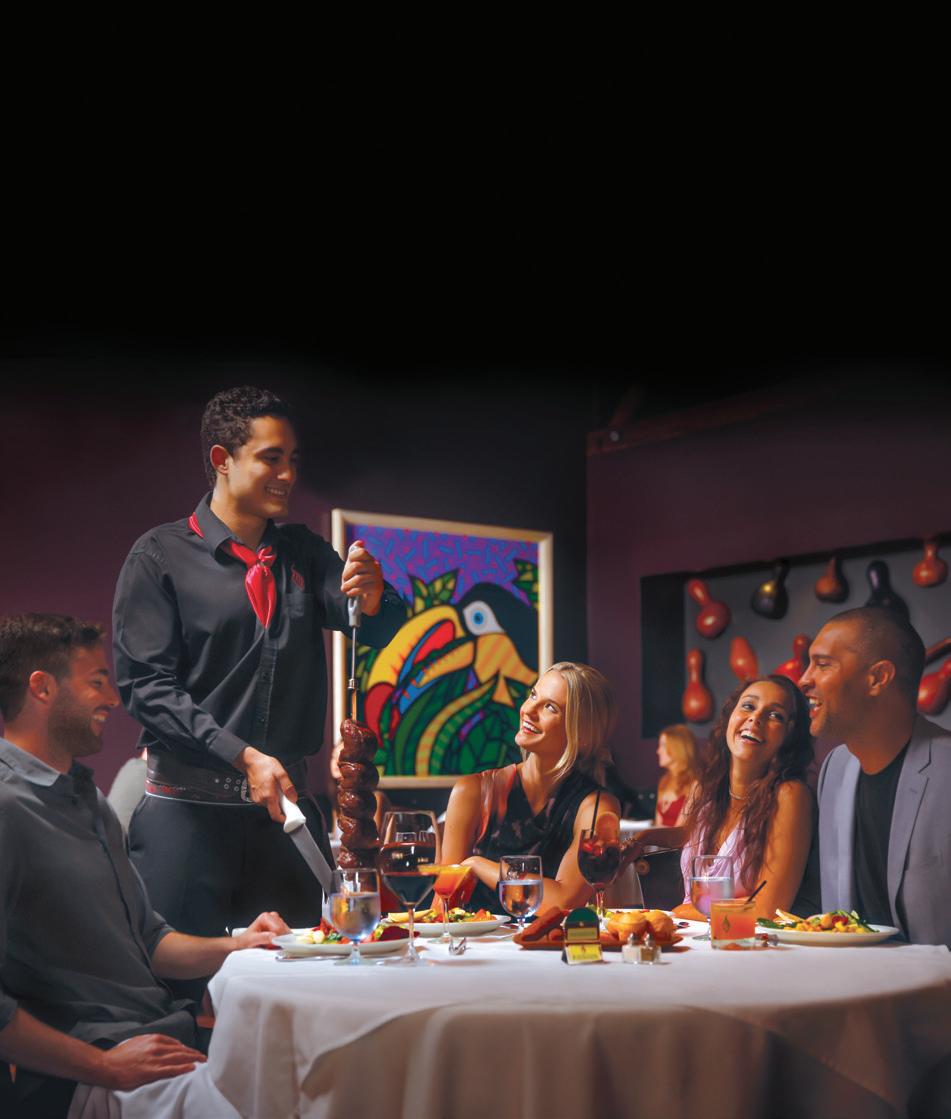
More than 50 years ago, actress Tippi Hedren starred in the Alfred Hitchcock masterpiece The Birds, set in Bodega Bay. Hitchcock noticed Hedren in a soft-drink commercial before casting her in the 1963 thriller, which made Hedren into a star. She reteamed with Hitchcock the next year in Marnie, but their falling-out during that film significantly damaged the actress’ career. Though she would eventually work with some of today’s hottest directors (David O. Russell, Alexander Payne), Hedren has long dedicated herself to the protection of African big cats born in captivity. She cares for 30 lions, tigers and cheetahs at Shambala Preserve, an 80-acre Southern California wildlife habitat she founded in 1983. But she still makes sure to return to Bodega Bay every year.

QBodega Bay was such a marvelous location for The Birds — beautiful and scenic, but distant and mysterious. Had you ever visited that area before making the movie?


ANo, when I arrived to film The Birds was the first time I had been there. Bodega Bay is absolutely beautiful. The scenery, and the weather, can be dramatic. We shot there in February, and the weather seemed to change every 10 minutes. It can be very cold, but there is always a unique beauty to the area.
QIt’s a fun place to visit for fans of the film because so much of it looks the same today as it did in 1963 when the film came out. Hitchcock shot so many natural landscapes — the bay and the coastline — but the schoolhouse that is featured in a crucial scene is still intact.
For more information about Hedren’s Shambala Preserve, visit shambala.org.

AYes, it’s really amazing how everything is still there. I go back every Labor Day and have a wonderful reunion with an area and a community that has meant so much to me. Year after year, nothing seems to change. Well, one thing changed. On my most recent visit, I went to the schoolhouse and the play structure had been removed. I asked what happened to it and was told it was donated to a local school. I was thrilled that it was given to children, but it also made me think how nice that would have been to have that play structure at Shambala. I thought, “I’ll bet the company that builds our compounds could recreate that play structure,” so, I asked our photographer to look at the scene in the film and capture a picture of it. They were able to build an exact replica, and everybody who visits just loves it.
QA popular fundraising effort you have for Shambala is the series of Sonoma County Tippi Hedren wines with Birds-themed labels.

AI have four different varieties! This was proposed to me as a way to have a connection to the movie and have the sales benefit Shambala. I thought, why not? I drink wine anyway, and these wines are really good.
QIt’s interesting how your life’s work protecting wild animals seems connected to The Birds. Both stories involve these beautiful creatures that can also be lethal.

AYou’re right; it’s an interesting comparison. If it wasn’t for The Birds, I would not be doing all the work I am doing now. The movie, of course, brought me quite a bit of attention. I was as hot an actress as there was in Hollywood. After those films, I asked to be let out of my contract, and Hitchcock refused. When directors called to ask if they could work with me, Hitchcock said, “She’s not available.” He ruined my career but he did not ruin my life. I started to work with Food for the Hungry and traveled the world helping people. That was an incredible part of my life. And in 1969 and 1970, I took two trips to Africa, which had an enormous impact on the rest of my life.
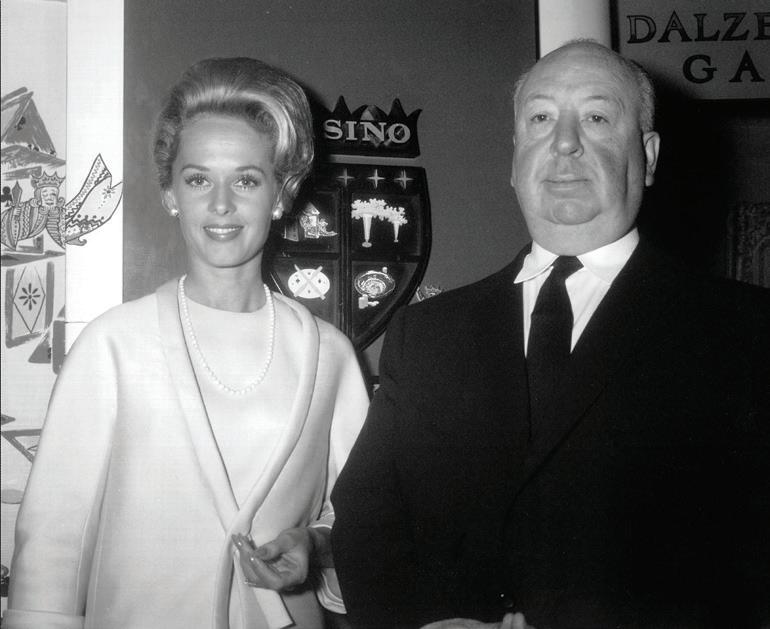








The Mill Valley Film Festival isn’t the only one that’s made a name for itself.
BY KASIA PAWLOWSKAIt’s no secret that the Bay Area is a hotbed of creative energy, and if you need proof, look no further than the selection of top-rated film fests that pepper the region we call home. From San Jose’s Cinequest (named Best Film Festival by USA Today readers) to Sonoma’s International Film Fest, the events are as varied in location as they are in subject. Here are a few worth checking out.
Berlin & Beyond Film Festival
When: January
Details: This deutsch-centric festival has been bringing new cinema from Germany, Austria and Switzerland to San Francisco and beyond since 1996 and creating a cultural window in the process. ( facebook.com/berlinbeyond )
Cinequest San Jose Film Festival
When: Late February/Early March
Details: It makes sense that Silicon Valley’s top festival would highlight technological advances, and Cinequest does just that plus more. Not only does it draw attention to new filmmaking techniques, it also serves as one of the top discovery festivals for international artists. (cinequest.org)

Sonoma International Film Festival
When: March
Details: This festival brings high-caliber international talent to an intimate locale with more than 90 documentaries, films and shorts that are screened every year at various venues, all within walking distance of downtown. (sonomafilmfest.org)
Tiburon International Film Festival
When: April
Details: From its motto (“Under standing the World Through Film”) to its goal of enhancing tolerance between people of all backgrounds through cultural enrichment and heightened cultural awareness, this festival is all about inclusion. (tiburonfilmfestival.com)
Oakland International Film Festival
When: April
Details: For the past 13 years Oakland’s International Film Festival has been trying to improve the mental, physical and spiritual health of the diverse populations of the East Bay through inspiring film, and it aims to grow each year. (oiff.org)
San Francisco International Film Festival
When: Late April/Early May
Details: Going into its 59th year, the SFIFF is one of the oldest film festivals in the Americas, and the festival’s breadth is indicative of its age. Every year, about 200 films from more than 50 countries are presented, with organizers specifically emphasizing work that hasn’t secured U.S. distribution yet. (sffs.org)
San Francisco Silent Film Festival
When: Last weekend of May
Details: Despite the lack of talking, the San Francisco Silent Film Festival generates quite the buzz. The largest silent

film festival in the United States, the SFSFF has become an internationally renowned destination for filmmakers and audiences. (silentfilm.org)
San Francisco Jewish Film Festival
When: Late July/Early August
Details: In its 36th year, the San Francisco Jewish Film Festival was the first and is now the largest Jewish film festival in the world. While the main event takes place during the summer, the SFJFF is active all year round, with screenings, events and shorts available to view online. (sfjff.org)
American Indian Film Festival
When: November
Details: The American Indian Film Festival is the world’s longest-running showcase for independent films depicting U.S. American Indians and First Nations peoples of Canada. It will be celebrating its 40th year this November and is not to be missed. ( facebook.com/aifisf )
Marin is the wealthiest county in California. Yet nearly a quarter of our older adults live in poverty. This is where Whistlestop comes in.

Won’t you help with a monthly gift? Just $15 a month helps feed homebound seniors nutritious meals and gives them friendly visits. Visit AgingInMarin.com.


YOU’VE GOT TO LOVE MARIN. LAND of MILLION DOLLAR HOMES, $10,000 BIKES and 20,000 SENIORS who CAN’T PAY THEIR RENT.

There’s always a sky full of stars at the Mill Valley Film Festival.
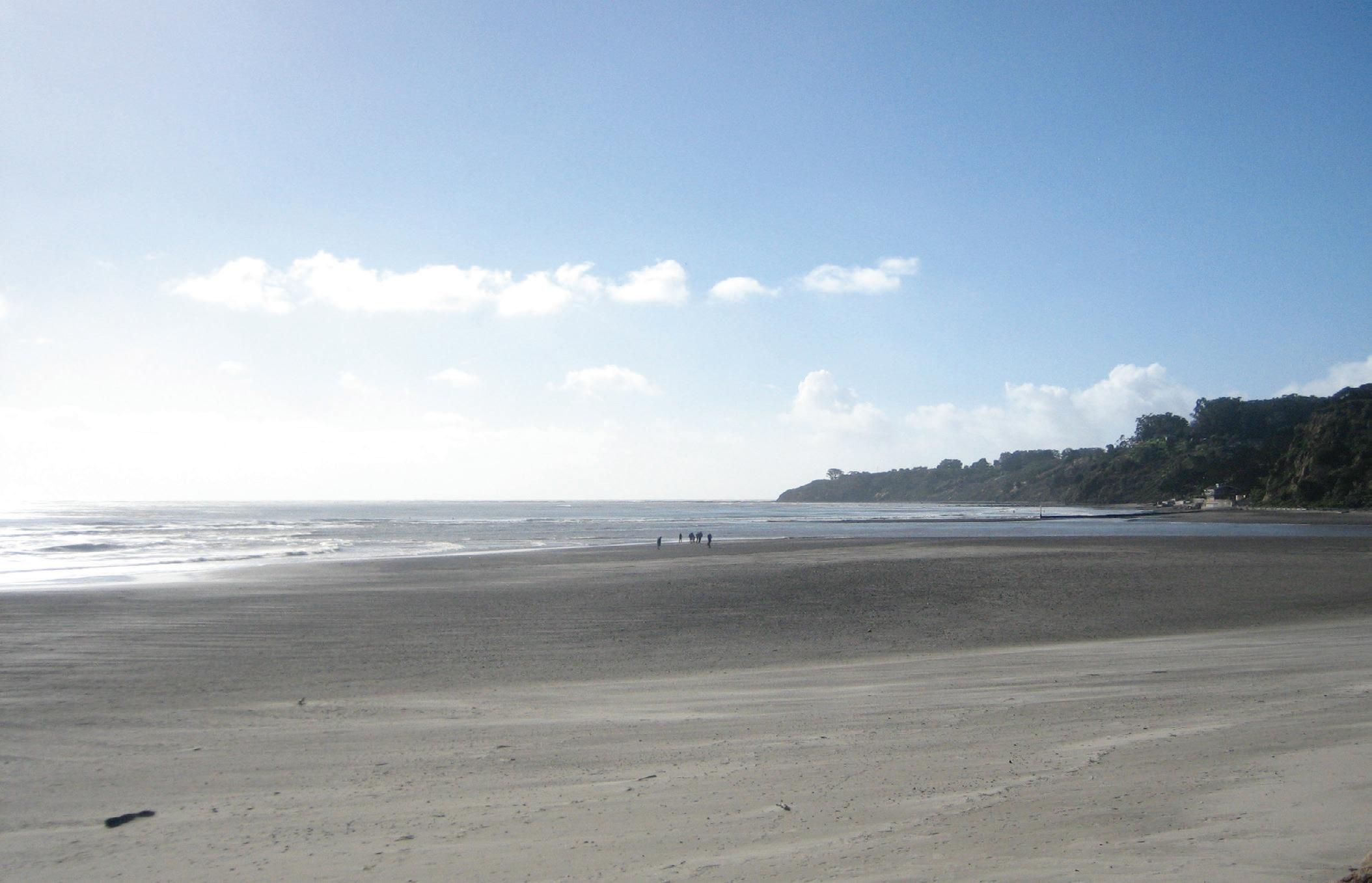
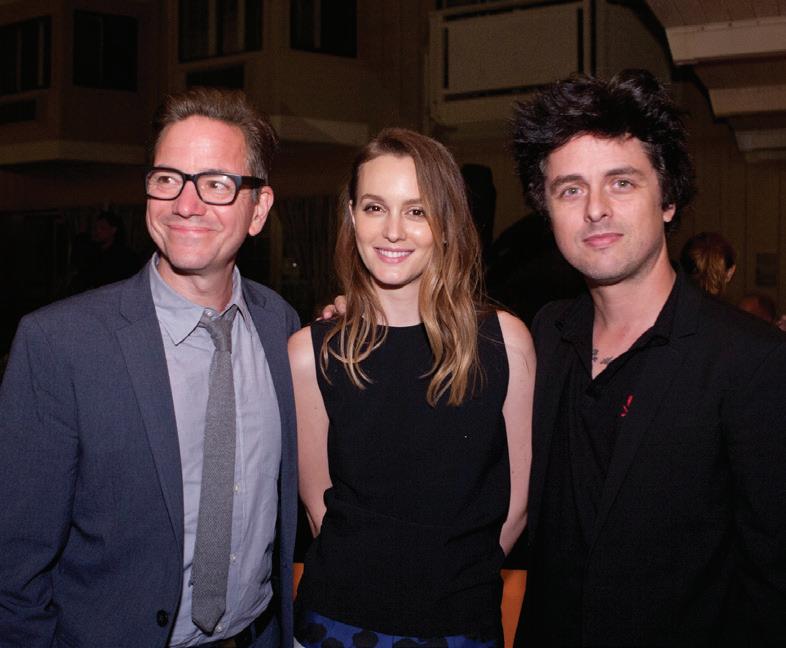


Since its inception in 1978, the Mill Valley Film Festival has built a reputation based on its high-quality selections and has steadily grown to be the most prestigious film festival in the Bay Area. Not only is it one of the best places to check out Oscarworthy pictures, it’s the prime spot for stargazing in October. From Bruce Dern and Marion Cotillard to Uma Thurman and Bryan Cranston, here are some of the top actors who have graced the red carpet in Marin. —KASIA
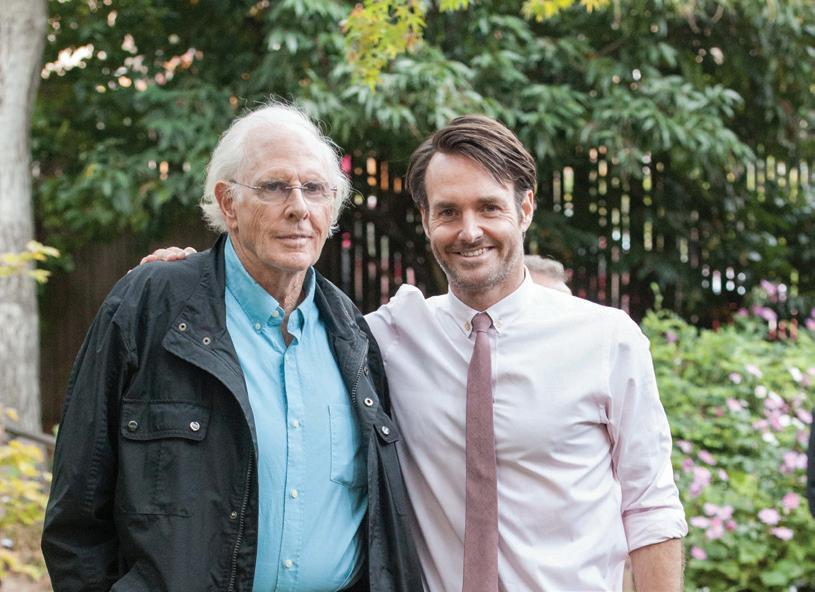 PAWLOWSKA
PAWLOWSKA


